

Do you operate a yacht? Our app is perfect for you
Yacht fuel cost calculator - how to estimate the costs.
Yacht captains have many responsibilities when it comes to the management of their vessel. One of them is keeping track of expenses, which is why it is important to familiarize yourself with the vessel’s operational costs. Keeping a luxury superyacht afloat isn’t cheap, and many claim that the average annual cost ranks up to 10% of the vessel’s price.
From these expenses, a significant portion goes to fuel. Filling up the tank of your boat is quite pricey, which is why a growing number of boat owners want to know exactly how much they are looking to spend for their upcoming voyage. This is also important for people who want to charter a boat for their holiday.
If you’re wondering how to best estimate the costs involved, you’re in the right place. This article will help you calculate your vessel’s yacht fuel cost while giving an overview of all the criteria used as variables. To make the process even easier, we link to a yacht fuel cost calculator to help you get an indication of the expenses you’ll need to cover. Let’s delve in!
Yacht fuel cost calculator
How to estimate yacht fuel costs, how much fuel does a yacht use.
- Price of boat fuel per gallon?
Yacht fuel formula
The easiest way to calculate your fuel costs is by using a yacht fuel cost calculator. There is a great calculator available here in case you want to save time and get an approximate estimation.

As you can see, the yacht fuel cost calculator has many variables which you need to be aware of before you set out to calculate the approximate price. This is what we will be dealing with in the next few chapters.
To help you get a better understanding of the calculation process we will do things manually while giving you the exact formulas used to calculate your vessel’s fuel needs. Therefore, make sure you keep on reading.
There are several things you need to keep in mind when you first set out to estimate the total fuel cost for your next voyage. These are summarised in the following points:
- Distance of journey - The total amount of nautical miles (or km)
- Cruising speed - The (average) speed of your vessel (in knots or km/hr)
- Fuel consumption - Understanding how many gallons (or liters) of fuel are consumed per hour
- Yacht fuel price - Understanding the average market price per gallon of fuel
The first two points depend solely on your needs and personal preference, which means that they are more flexible on a subjective basis. The latter two points may require a bit of research, especially if you’re not familiar with the engine of the vessel.
In the following sections, we will delve deeper into each of the points mentioned above, and offer the required formulas to help you calculate yacht fuel cost.
Calculating distance and speed
To understand the exact distance you are looking to cover in your next voyage, you can simply use Google Maps to plan your route. The following video explains the process in detail.
As soon as your route is planned out, you can measure the distance as well, selecting the preferred method of calculation. In our case, it is best to measure in nautical miles (1nm=1,85km), as this metric is more commonly used among sea men. The yacht fuel cost calculator above has an embedded map that helps you pinpoint the journey you want to make.
Next comes the cruising speed. The number is mostly calculated in knots (nautical miles/hr). The speed with which the vessel will cruise depends on the captain onboard, but is often influenced by the owner and guests onboard. You can make a rough estimation of this number based on previous trips.
Next, we need to calculate the amount of fuel that you will likely need. To do this we need to understand the engine type, its horsepower, and several other factors.
Let’s take a marine diesel engine for example. These engines are very common on motor yachts and consume approximately 0.4 pounds of fuel per hour for each unit of horsepower. You can find fuel consumption info for your specific engine by looking it up on the web or by calling the service number.
Once you know the fuel burn rate, it’s best to add a relative error margin of 10% based on minor factors. These include weather conditions, vessel size, and drag, all of which can increase the fuel burn.
How much fuel does a yacht use per hour?
Now that you know all the variables you can go ahead and calculate the amount of fuel that your yacht will need.
- Start by calculating the fuel burn per hour based on the horsepower of the engine.
- Add a multiplier based on the cruising speed of your vessel.
A vessel with a diesel engine of 300 horsepower will most likely burn 16-17 gallons per hour, which you can then use as a guideline when calculating the travel time based on the nautical miles you are looking to cover.
Superyachts are consuming much more fuel. An average 70-meter luxury yacht will burn around 130 gallons per hour with the engines running, while the amount increases significantly when the ship is moving. On average, you are looking at ±€2000 per hour (±1000 gallons) to achieve a speed of 20 knots. Of course, the higher the cruising speed, the more fuel you will be burning per hour, which in turn makes each hour at sea more expensive.
How much does boat fuel cost per gallon?

The exact price you are looking to pay per gallon depends on the marina you find yourself in. By looking at several price points of marinas, we get the following:
- Average diesel prices range from $3.2-$3.9 per gallon
- Average petrol prices range from $7.2-$7.8 per gallon
Note that discounts usually apply whenever you choose to purchase large quantities of fuel.
Why is boat fuel so expensive?
Marine fuel pricing is heavily inflated due to low supply and high demand. In short, the limited number of fuel stations at marinas have to service all the yachts that dock, which leads to a no-choice monopoly.
That said, yacht owners are usually not that concerned about the small price spike that marinas charge as an extra. If anything, they are happy to pay due to the convenience of the service.
How much fuel does a yacht hold?
Once again, the answer to this question depends on the size of the vessel. Smaller yachts can hold around 1300 gallons of fuel, while the bigger vessels can store up to 100,000 gallons. The ship’s engineers should be able to provide this number for the vessel you command.
Now that we have a better understanding of all the variables that determine the cost of fuel, we can go ahead and take you through the calculation process step by step.
First, know the total duration of your cruise. To obtain this information, divide the number of nautical miles by the cruising speed of your vessel (knots). For example, if you want to make a journey that totals 150 nautical miles while traveling at 20 knots, the yacht fuel formula looks as follows:
Total duration = 150 nm / 20kn
Total duration = 7,5 hrs
Note that the amount of fuel consumption may end up higher than expected if:
- Sea and weather conditions are not favourable
- You plan to make short stops along the way while the engine keeps running
Next, what you want to do multiply the number of hours by the number of gallons that your engine burns on an hourly basis while moving at the speed you previously indicated. If we take, as an example, the superyacht mentioned in the previous examples, we would make the calculation as follows:
7,5 hrs x 1000 gph = 7500 gallons
Now assume that you will also make two stops along the way, an hour and a half each, in order to let the guests enjoy their time; maybe ride a jet ski.
You then multiply the added number of hours with the consumption rate of a running engine. In this case:
3 hrs x 130 gph = 390 gallons
All that is left to do now is add up the total amount of fuel needed and multiply the number with the price per gallon.
(7500+390) x $3,5 = $27615
In this example, the final cost of your will set you back a little bit more than 27 thousand dollars. Just to be safe, calculate the additional 10% (margin of error) to be prepared against unexpected mistakes. This added amount is not necessarily an ad-on when you consider chartering. Private yacht owners, however, should add the amount to their final cost.
And that's it! You should now have a better idea on the steps you need to follow to calculate the fuel costs for your yacht. While there is quite a bit of information you should keep in mind, it is best to plan out everything with detail to avoid unforeseen costs. If you enjoyed this article, check out our blog post on yacht electrical systems as well.

How Much Fuel Does a Yacht Use? An In-Depth Analysis
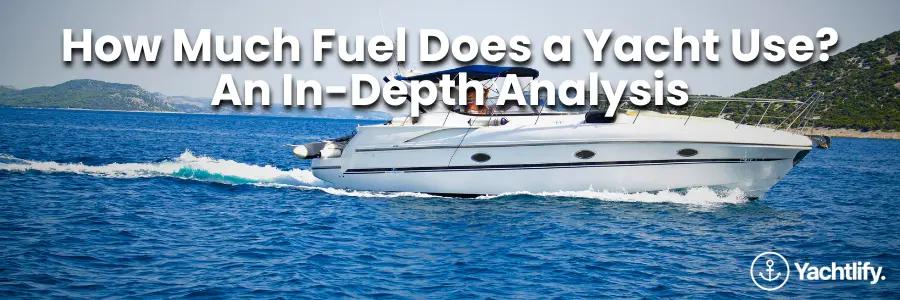
When it comes to luxury and adventure on the high seas, yachts are the epitome of both. Whether you’re a yacht owner or dreaming of chartering one for your next vacation, understanding the fuel consumption of these majestic vessels is crucial. Fuel usage not only impacts the cost of your journey but also has environmental implications. In this article, we dive into the factors affecting yacht fuel consumption and provide insights to help you estimate how much fuel a yacht uses.
Understanding Yacht Fuel Consumption
Fuel consumption in yachts is influenced by several factors, including the yacht’s size, engine type, cruising speed, and conditions at sea. Here, we break down these elements to give you a clearer picture.
Yacht Size and Engine Type
Yachts come in various sizes, from smaller 40-foot models to massive 100-foot plus luxury liners. Generally, the larger the yacht, the more fuel it consumes. Engine type also plays a significant role. Traditional diesel engines are common, but newer models may feature more efficient or hybrid engines that can impact fuel usage.
Cruising Speed
Speed is a significant factor in fuel consumption. Higher speeds increase resistance in the water, requiring more power and, consequently, more fuel. Cruising at a yacht’s optimal speed, often referred to as the “hull speed,” can help maximize fuel efficiency.
Conditions at Sea
Sea conditions can also affect fuel consumption. Smooth, calm waters allow for more efficient travel, while rough seas can increase fuel use due to the additional power needed to maintain speed and stability.
Estimating Yacht Fuel Consumption
While it’s challenging to provide a one-size-fits-all answer due to the variables involved, we can offer some general guidelines. On average, a yacht might use between 20 to 100 gallons of fuel per hour. Smaller yachts, such as those around 40 feet, tend to be on the lower end of the scale, consuming about 20 to 40 gallons per hour. Larger vessels, which are over 100 feet, can consume significantly more, sometimes exceeding 100 gallons per hour, especially at higher speeds.
Example Calculations
Let’s look at an example. For a 70-foot yacht cruising at a moderate speed of 20 knots, fuel consumption could be around 50 gallons per hour. If you’re planning a 100-mile journey, at 20 knots, it would take you approximately 5 hours. This means the total fuel consumption for the trip could be around 250 gallons.
Tips for Reducing Fuel Consumption
- Cruise at Efficient Speeds: Find and maintain your yacht’s hull speed for optimal fuel efficiency.
- Regular Maintenance: Keep the engine and hull in top condition to reduce drag and ensure the engine runs efficiently.
- Plan Your Route: Opt for the most direct route and consider current sea conditions to minimize unnecessary fuel use.
- Lighten Your Load: Only carry what you need for your journey, as extra weight can increase fuel consumption.
Understanding and managing fuel consumption is crucial for any yacht owner or enthusiast. By considering the factors outlined above and implementing fuel-saving strategies, you can enjoy the luxury of yachting more sustainably and cost-effectively. Whether planning a short excursion or a long voyage, a careful consideration of fuel use will enhance your experience on the water.
Remember, every yacht is unique, and so is its fuel consumption. For specific figures, consult your yacht’s manual or speak with a marine professional who can provide insights tailored to your vessel. Enjoy your time at sea, and sail smartly!
Listing your boat with Yachtlify provides several unique benefits, including:
- List once, post on multiple platforms (Yachtlify.com, Facebook Marketplace, Instagram, and others).
- Schedule showings and sea trials with our calendar and reminders.
- View listing engagement analytics across platforms.
- eSign, state forms, and Coast Guard forms to manage closing documentation in once place.

- Charter & Brokerage
- Yacht Design & New Builds
- Tenders & Toys
- Superyacht Events Calendar
- Career & Training
- Departments
- Superyacht Crew Finances
- Sustainability
- Shipyards and Marinas
- Health & Wellbeing
- Polar Region
- Our Services
- Meet the Team
Yachts And Fuel – How Much Do They Really Consume?
.png)
Fuel is one of many annual running costs of a yacht. Not only does the yacht need fuel for cruising; the generators require it to keep the vessel running while at anchor and underway. As well as this, many of the water sports toys require it too.
Some yachts cross the Atlantic Ocean twice a year between the Mediterranean and Caribbean while others embark on world cruises. That equates to a lot of fuel.
So How Much Do They Really Consume?
According to the Yachting Pages, the longest Superyacht in the world, 180m M/Y Azzam, holds 1,000,000 litres of fuel. To put it into perspective, that is the equivalent of filling a regular hatchback car 23,800 times. Or, six Boeing 747 commercial airliners.
West Nautical’s Vessel Manager, Tony Hildrew, a former Yacht Chief Engineer said:
“Fuel is the single biggest expense when it comes to yacht operations, it is estimated that the global spend on fuel is around $150bn annually however this shouldn’t put you off, there are a number of ways to ensure your fuel consumption doesn’t get out of hand. Implementing a Ships Energy Efficiency Management Plan or SEEMP for short is a great way to keep fuel costs down without compromising on your cruising experience.”
Each yacht will consume fuel differently for a number of reasons. It could be the size and make of the engines. Or, how often the yacht is using generators. As well as the number of tenders and water sports toys on board that require fuel. For example, if the yacht is out at anchor and running on generators 90% of the time, the fuel consumption will be much higher than a yacht that is in a marina at night and connected to shore power and water.
Another factor that will affect fuel consumption is the yacht’s itinerary. This is because the sea conditions will impact how much fuel the engines consume.
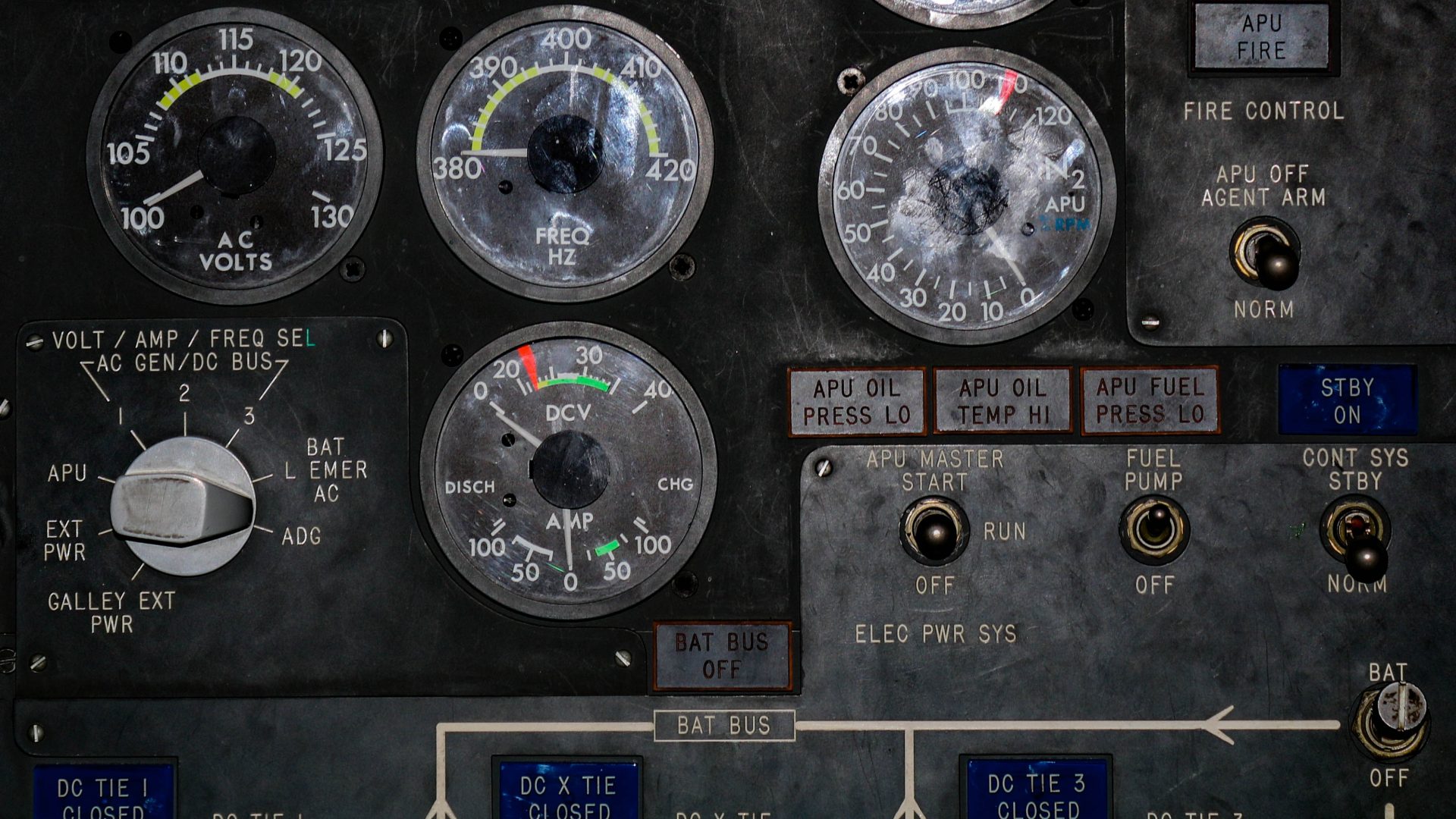
How Is Consumption Measured?
You will be able to input the start and ending points of your cruise on the map. This will automatically update the distance table. The next step is to enter the speed, fuel consumption and cost of fuel per litre to determine the cost of the trip.
Here is an example: A fast 30m yacht cruising at 20 knots will consume roughly 400 – 500 litres depending on the engine type. This would equate to the total consumption of 2500 litres for a distance of 100 nautical miles.
Another example is, a 70m yacht looking to travel 100 nautical miles with the engines burning 1000 litres per hour would add up to a total consumption of 8335L for that passage. Depending on where the yacht bunkered, the estimated cost with the price per litre being on the low end at €0.90 per litre would cost a total of €7501.50. An example of a 100 nautical mile passage would take you from Saint Tropez to The North Coast of Corsica.
How Much Does It Cost?
Fuel prices fluctuate depending on which country you bunker in and some places you bunker offer tax free fuel such a Gibraltar and Montenegro. Fuel prices can vary but typically costs between €0.80 and €1.30 per litre.
Yacht charter, sales and management company West Nautical added:
“Fuel costs should be at the top of any yacht owner and captain’s minds for two reasons: to minimise costs as well as reduce the environmental impact of burning unnecessary fuel. The superyacht charter market, more than most other markets, relies on pristine waters for their guests to enjoy their holiday. If the oceans in popular charter destinations are not maintained, it will decrease the demand for yacht charter and therefore the revenue for owners.” “If you are looking for expertise in operational management and engineering in order to plan a SEEMP, West Nautical would be delighted to assist.”
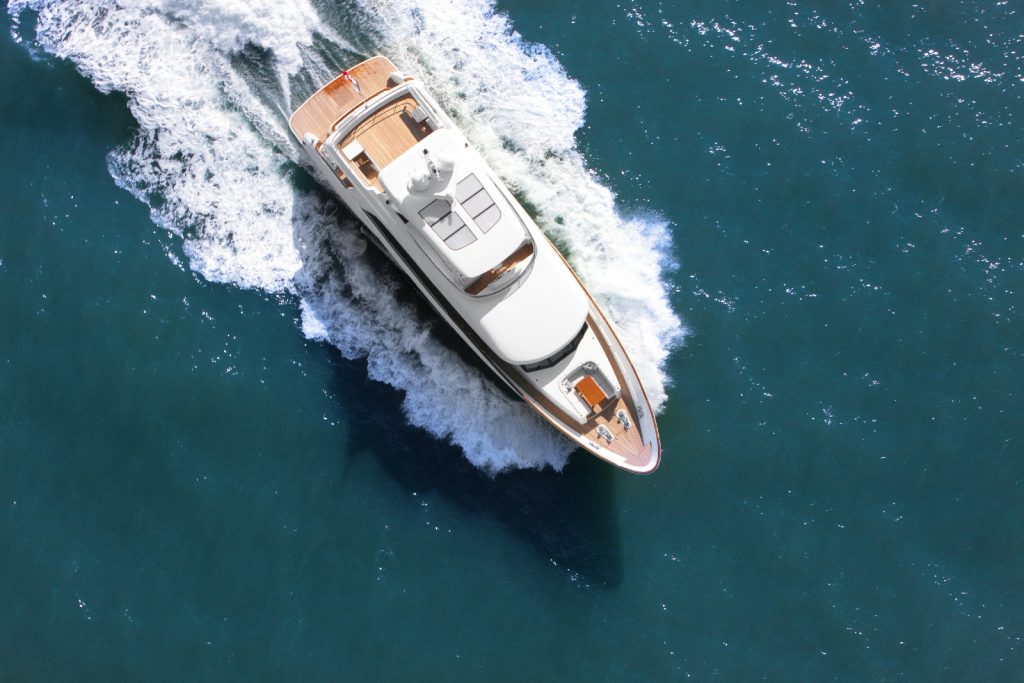
About West Nautical
West Nautical sell, charter and manage superyachts from their head office in Newcastle upon Tyne. The business currently employs a team of 21 staff throughout their offices based in the UK, Russia, France and Cyprus.
Since their inception over 25 years ago, West Nautical have become recognised as one of the most respected, trusted, knowledgeable and accountable professional services firms in yachting – largely due to their relentless determination to act in our clients’ best interests. Their approach and attitude is transparent, refreshing and focused on providing value-added services delivered simply, elegantly and affordably.
Visit West Nautical’s website here: https://westnautical.com
For Media enquiries please contact sarah.mackenzie@westnautical.com
To keep up to date with the latest Superyacht Content News, click here .
Sign up to our Newsletter below:
Newsletter Signup
- Your Name First Last
- Your Email *

West Nautical
Related articles, tender of the week: maori 54, tender of the week: maori 46, q&a with sober crew social club. where sober doesn’t have to mean boring, tender of the week: bluegame.

Superyacht Content
Social media influencer and digital brand expert.
Superyacht Content brings you the latest in social news for the superyacht industry.
Keep up to date with us across our social channels, and don’t forget to hit that share button!
- Superyacht News
- Superyacht Jobs
- Superyacht Marketing
Join our Newsletter
Copyright © 2023 Superyacht Content | Website Design by Zonkey
Privacy | Credits | Get in Touch
Boat Fuel Consumption List
The fuel consumption of any yacht, can vary widely based on several factors including the yacht's size, engine type, cruising speed, and conditions under which it is operated.
The figures above are average calculated.
| Boat Name | Average Fuel Consumption (liters per hour) |
|---|---|
| Waterdream | 200-300L |
| Mangusta 108 | 990L |
| CRN 130 | 650L |
| Astondoa 102 GLX | 650L |
| Pershing 5X | 250L |
| Pardo 50 | 200L |
| Princess V72 | 400L |
| Mangusta 92 | 700L |
| Sunseeker Predator 84 | 600L |
| Leopard 27 | 550L |
| VanDutch 55 | 200L |
| Pershing 72 | 600L |
| Vanquish 82 | 350L |
| Pershing 90 | 900L |
| Vanquish 52 | 200L |
| Riva Rivale 56 | 250L |
Boat Fuel Cost Calculator
Data Policies
Social media, yachts zenith nautic s.l.
VAT Number: B56880875

- Destinations
How to calculate yacht fuel cost – The boat fuel cost calculator
When you decide to enjoy a charter , there are many things you have to consider, not only when and where and whom you wish to join the party. I’m talking about the costs and expenses you will have during this memorable holiday with your loved ones. Depending on what type of vessel you are about the rent and the destination you will discover (as every place has its prices, pros, and cons), you will have a different bill at the end of your cruise .

How much cost chartering a yacht?
The most common questions we receive from our customers before they embark aboard the selected yacht they booked with us for their charter are:
- What does the price include?
- What is APA?
- What does APA stand for?
- What are the extras?
- How much is VAT?
- Can I have an estimate of the extra costs and expenses?
- How much will I spend in terms of fuel?
- What does the fuel boat cost?
- How to calculate fuel boat cost ?
- What is the price to dock the yacht at the marina?
Fill the below form to receive instantly the estimate of fuel cost for your charter
Javascript is disabled on your browser. Please enable it in order to use this form.
Yacht Charter Search Go ahead, it's quick and simple
Your form has been submitted.
Thank you for your request. Our team will answer to you within 24 hours. I you have an urgent request then you can also call us on +39-3343600997.
We faced problems while connecting to the server or receiving data from the server. Please wait for a few seconds and try again.
If the problem persists, then check your internet connectivity. If all other sites open fine, then please contact the administrator of this website with the following information.
TextStatus: undefined HTTP Error: undefined
Some error has occured.
Our expert Charter Managers are glad to assist you with all the questions, clarifications, thoughts, and doubts you may have from the boat’s selection to your charter’s arrangements until the disembark. We always reserve transparent and clear 24/7 assistance to our new and repetitive clients, without surprises.
How do I calculate yacht fuel cost?
When you charter a power yacht , the most critical cost to support is for sure fuel .
When you rent a sailboat or hire a catamaran , don’t forget about the fuel cost for generators , the outboard engine of the dinghy. It would be a different cost at the end (definitively lower than aboard a motor yacht), but pay attention to air conditioning, especially when you spend the night at anchor.

Yacht fuel calculation: how it works
It’s time to take a map and find on it all the spots and destinations you wish to reach! Keep in mind that you can predict the weather conditions only 10 to 7 days before embarking.
Prepare your sailing itinerary .
Your sailing route will depend on many factors, as the engine power and cruising speed of the yacht, the weather conditions, and the nautical miles you intend to navigate. Naturally, you will have to be informed about the actual market price of the fuel in the destination you will sail to have the right or most approximate calculation of the boat fuel cost .

Together with the assistance and suggestions of our sales department, our experienced technicians created an advanced, quick, and efficient tool for the yacht fuel calculation that we call the “ Boat fuel calculator .” This tool allows you to have a concrete and actual analysis of the yacht fuel consumption and price, starting with your itinerary plan on the map to the final result.

Let’s begin: select the point of embarkation of your charter on the map. Now continue pinning all the beautiful spots you want to reach by boat during your yacht charter (as you can see, the calculator automatically updates the number of nautical miles) to disembark. You will obtain the total number of miles.
Calculate the nautical miles
Naturally, you can choose the unit of measures (nautical miles, miles, km): in this case, it would be the nautical miles and, every time you pin a new destination on your map, from the embark to the disembark, the tool updates the total number of miles cruised.
Now that we have the total number of miles, mandatory to calculate the boat fuel cost of our cruise. We need to know the yacht’s cruising speed, the engine consumption, and the market price of diesel in our next sailing destination.
Engine power and consumption

Now that we have the nautical miles, we need to know the engines’ power (the hp) and the real engine consumption of the boat we rent to have the actual yacht fuel calculation .
The last essential element we need to obtain the yacht fuel cost of our charter is the market price of gas in the destination we will sail. To have the diesel’s actual merits, you can consult many updated webpages of marinas and fuel bunkers, which continuously report the existing fuel prices day by day. (You can also check at https://www.marineyellowpages.com/ )
The fuel consumption formula

What we are looking for is the expense of fuel we will have during our cruise.
Now that we have all the information we need for the yacht fuel calculation, and so:
- Total nautical miles;
- Engine consumption;
- Cruising speed;
- The market price of gas;
We can proceed with the real boat fuel calculator using our formula.
Firstly, we need to know our charter’s travel time; I’m referring to the cruise duration. The formula to obtain the cruise duration is determined by dividing the number of nautical miles by the number of knots (the boat’s cruising speed).

For example, if the nautical miles we are planning to navigate are 150 nm and the cruising speed of our yacht is 18 knots:
150 nm / 18 kn = 8,333 hr
So if we want to cruise in a total of 150 nautical miles with a cruising speed of 18 knots, we will take about 8,333 hours. You will always have to consider the sea and weather conditions, which will influence the engines’ consumption.
And now that we have the “time,” the “duration” of our charter? How to calculate the yacht fuel cost?
If the engine of our boat consumes 250 lt/hr, we have to multiply the time of our cruise, so in this case, 8,333 hr by the boat fuel consumption, so by 250 lt/hr:
8,333 hr / 250 lt/hr = 2.082,50 lt
2.082,50 are the liters we consume cruising for 8,333 hr with engine consumption of 250 lt/hr. Now we have to multiply the number of liters just obtained by the market price of fuel, that we can suppose at 1,50 Euro/lt :
2.082,50 lt x 1,50 Euro = 3.123,75 Euro

Let’s resume the “magic formula” for yacht fuel calculation. If your sailing itinerary contemplates 150 nautical miles at a constant cruising speed of 18 knots, 250 lt/hr consumption, and marine diesel cost of 1,50 Euro/lt, at the end of our yacht charter, we will have a bill of 3.123,75 Euro.
The calculations of boat fuel cost are always approximate and depend on sea and weather conditions and atmospheric and natural events.
Our professional sailing tips and recommendations
Our team is always pleased to assist you, providing free 24/7 professional support for your charter arrangements and customizing your charter and journey. Feel free to contact us and get our advanced sailing tips and recommendations about your next charter: sailing itinerary, best bases, and marinas, where to spend the night at anchor, fuel bunkers, ATM and exchange, transfers from/to airport, groceries, and markets, restaurants and excursions, activities for kids and family, private celebrations, wedding, and corporate events, and much more.
Send us an email at [email protected]
Call or or text us (also on WhatsApp) +393343600997
Top sailing destinations
Yacht charter Italy – Sardinia yacht rental – Seychelles catamaran charter – Luxury yacht charter Thailand – Boat charter Caribbean – Catamaran charter Philippines – Greece yacht charter – Catamaran charter Mykonos – Boat hire Ibiza – Yacht rental Sicily – Amalfi yacht charter – Cannes yacht charter – Maldives catamaran – Cannes yacht charter
SEND NOW YOUR ENQUIRY FOR YOUR NEXY YACHT CHARTER WITH YOUR BOAT HOLIDAY:
RECENT POSTS
MY Esmeralda of the Seas is available & based in Antibes from 26 August to 10 September 2024
Exclusive yacht charter offers and last-minute deals for july 2024 in the mediterranean, my kar 88 folgore riva 2021/2024 in the west mediterranean with no delivery fees*, my xo of the seas – fill the gap july 14th to 28th, 2024 from naples to sardinia.
Share this Post
Page Loading
- Vessel ltinerary
- Administration
- Dockage & Fuel
- Maintenance
- Capital Repairs & Reserves
- Total Expenses =
- Name Length Build
- # Total Expenses Date Saved
Advanced functionality coming soon.
Us flagged vessel, health insurance costs per crew, uniform cost per crew, training cost per crew, food cost per crew, crew turnover, hires using a professional crew agency.
- Restore Default
- $ | € | £
Costs of food provisions will vary dependent upon how eloborate food Preferenaces are
Location will play huge factor in food provisons and thing may have to be folws into remorte locations.
Crew is one of the largest expenses on a superyacht and critical to the owner’s enjoyment of their vessel. As the largest crew agency in the world, we know crew. Our cost calculator contains customized crew lists for yachts ranging from 80ft to 600ft with salary information based on our reference verified salary data.
Our users also have the ability to completely tailor the crew list to the specific needs, schedule and requirements of their vessel. Each yacht is unique and may have specific owner requests in addition to the yacht’s safe manning requirements.
Management of the supplemental crew costs and strategic budgeting can help avoid significant overspend on categories such as food and uniform. This tool contains default values based on our industry expertise and recommended budget for an efficiently and safely run superyacht.
To learn more about each crew position in detail, including salary ranges, please visit our yacht department directory .
Drag the sliders to modify your results. These are not linear scales and we expect most yachts to operate within the 20-80% window. Above 80% and below 20% costs increase or decrease at exaggerated levels and we only see numbers in these levels in very rare circumstances.
This sunburst diagram is interactive. You can click into each block to see the expense break down and mouse over each block for more details.
Our chart of accounts displays seven major categories, 20 sub-categories plus a further 80 detail categories for a total of 107.
Our yacht operating cost calculator is now on it’s third major revision. We start with actual yacht expense data from our yacht management accountants and then generate formulas to extrapolate out the budget for a wide range of yachts. We have been providing accounting services to large yachts for the past 18 years.
Our operating cost calculator is tuned for yachts from 80 to 600 feet. We find operating variables create the largest variances for yachts smaller than 100 feet and larger than 250 feet. We have tested the numbers the most in the range from 100 to 250 feet.
Our budget calculator factors in the fuel burn for a range of engine sizes typically seen installed on yachts by length. By dragging the green “fuel dockage” slider to the right you will increase the projected fuel burn rate and therefore the budget cost for fuel. Our default position would be for a typical displacement fuel burn. Position the slider in the 60-80% range for fuel projections for planning hulls.
Our default values produce a budget number that we believe is generous to run a yacht to a high standard. Perfect is a very expensive word to use in the yachting industry where standards are already high. Moving the crew and maintenance sliders to 80% will provide an “industry best” quality of crew and give them the maintenance budget to operate to a very high standard. If you need to go over the 80% area then you may have unusually labor intensive equipment on the yacht.
Yes, our yacht operating cost calculator can output a budget suitable for this situation. Adjust the owner use to 2 (minimum value), owner slider to 0, crew slider to 10%, Administration to 10%, Fuel and Dockage to 0, Maintenance to 10% and then Capital Repairs to 0. This will remove all of the large charges associated with owner use and vessel movement but leave the essential base maintenance and insurance in place.
Lift on and float in yacht transport is a popular way to transport yachts across large ocean passage. The yachts that this service certainly applies to are ones that may not have the motoring range or structural integrity for blue ocean cruising. The cost of transporting a yacht twice per year is put into our budget once the “Fuel Dockage” slider hits 75%. If your yacht has the range we recommend self-sufficient ocean passages whenever possible. Whilst the transport companies sell their services based upon reportedly well oiled operated schedules the reality is that your yacht may stay waiting for pickup for a week or more with no compensation due. When factoring in all secondary factors of self-sufficient passages (increased fuel, maintenance, potential storm damage, crew time off, extra delivery crew) compared with transporting your yacht (insurance, potential loading / unloading damage, loss of schedule control, no work whilst underway, crew flights, crew accommodation) we believe that there is a 100% premium associated with float in transport and a 75% premium with lift on transport compared with self-powered.
Abandoned yachts crash in value. We recommend that even if you are trying to sell your yacht that you use the yacht for a minimum of two weeks per year so that systems are tested and working every six months. There is nothing worse for a yacht than not being used. If you truly are not going to use the yacht then you should sell it immediately for the first genuine offer as every dollar you put into maintenance will not be recovered at the time of the sale.
We did not build this version with sailing yachts in mind. Early in our development of this version we decided to exclude sailing yachts as a few of the major cost drivers scale very differently for sailing yachts compared with motor yachts. For example: To calculate paint costs we reviewed the surface area of over 100 large yachts and created a formula for painted surface area to length. Sailing yachts just don’t scale in a consistent way. Similarly crew numbers don’t scale in the same manner that they do for motor yachts. If there is sufficient demand we may build a sailing selector switch into a future version of this tool.
We hate to hear when yacht owners were told by their broker to factor in 10% of the purchase price to operate the yacht. This over used saying is sadly right occasionally (particularly for newer yachts in the $20-30M range)… but just because a broken watch tells the right time twice a day you shouldn’t rely upon it to tell the time. As yachts get older their capital value decreases but their maintenance costs increase. There is no way that a fixed 10% of purchase cost rule can be true… if your broker told you this rule then you need a new yacht broker… we know some good ones. 😊
Advanced functionality coming soon…
We are building advanced tools to allow you even greater control over our operating cost calculator. Please enter your email address below to be advised when it is available.
Save this version
Share your calculations.
Please save version before sharing LuxYacht - Calculator!!
You must be logged in to save this version of the cost calculator that you have customized for your yacht..
Your source for the latest news on yachts, boats and more. Read through our articles to find out how to compare boats and find the right fit for you!
Measuring your Yacht Fuel Consumption per Hour
Oct 10, 2019
less than a min
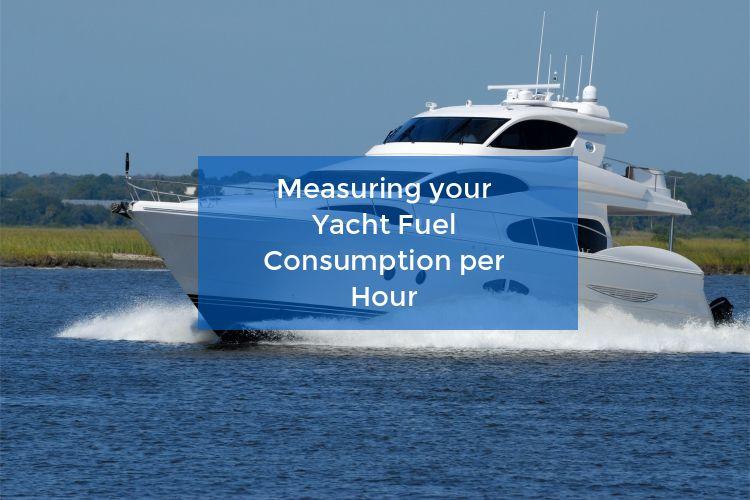
How to measure your yacht fuel consumption per hour
Yachts are quite similar to other vehicles in the sense that they work through fuel. Similarly to any other vehicle, it is important to calculate the yacht fuel consumption per hour before you plan a trip or before you purchase a vessel. Fuel consumption is also a good comparison base between boats. Whether before going on a trip, or buying a yacht, you need to have all the facts straight and know how much money you are going to invest not only at once upon purchase but also periodically.
There are different factors in the fuel consumption of a yacht. For example, if you use a generator or if you stay at anchor instead of docking, the fuel consumption will be increased . The itinerary will change fuel consumption as well. Sea is different than roads and the conditions in a sea change more dramatically than on land, which also impacts fuel consumption.
Fuel consumption for boats is measured in gallons per hour . The efficiency of boat fuel is measured in pounds of fuel that are used in an hour per horsepower. In order to be able to read the calculation right, any boat owner should know that gasoline is almost 6.1 pounds per gallon while diesel is 7.2 pounds per gallon .
Usually, if you consider that all sea conditions are pristine, the fuel consumption of a normal diesel engine is 0.4 pounds per hour for each unit of horsepower.
How to calculate yacht fuel consumption
Calculating it by hand is complicated, which is why many people choose to use online calculators . The way it works is it allows you to put down certain parameters that calculate the fuel consumption. These parameters include route , units of measurement and engine power .
Lastly , what most people are interested in is actually the cost of fuel consumption per hour. So the last parameter to include is the current price of fuel . Marine websites usually include this price up to date.
Another step that people have taken is develop a boat fuel consumption chart for their own boat and find the average in a month.
Alternatively, there is a formula that calculates the maximum fuel consumption of the engine which is:
GPH = (specific fuel consumption x HP) / The specific weight of fuel
This formula determines the fuel consumption when the engine is at full speed . If the speed is decreased then the fuel consumption is decreased as well. Basically, what you need to do is include the horsepower rate of the boat and you multiply it by the specific fuel consumption average and you divide that product by the weight of the fuel.
If you want to compare your boats GPH with other boats than you can use TheBoatDB database. If you already have a boat you can register for free and compare it with other boats within the database.
These are simple methods to calculate fuel consumption, however for a precise one you would have to know all the specifics of your boat and put the parameters through the calculator.
You might like these too

What is a Chine on a Boat lg ...
Oct 01, 2021
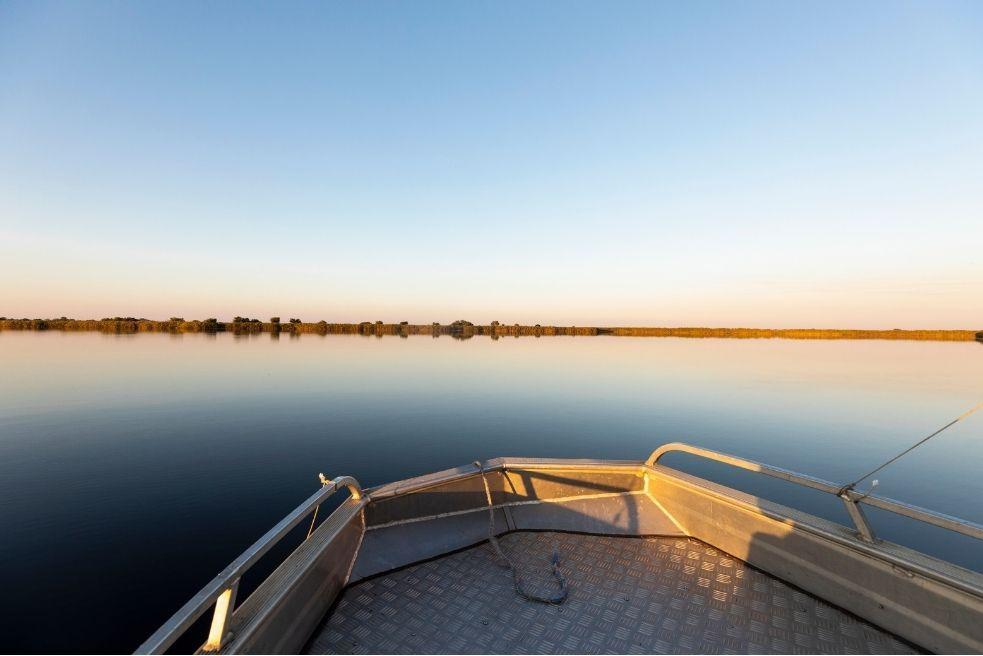
Flat Bottom Boat Advantages lg ...
Sep 30, 2021

Shoal Keel Sailboats Advantages and Disadvantages lg ...
Sep 13, 2021
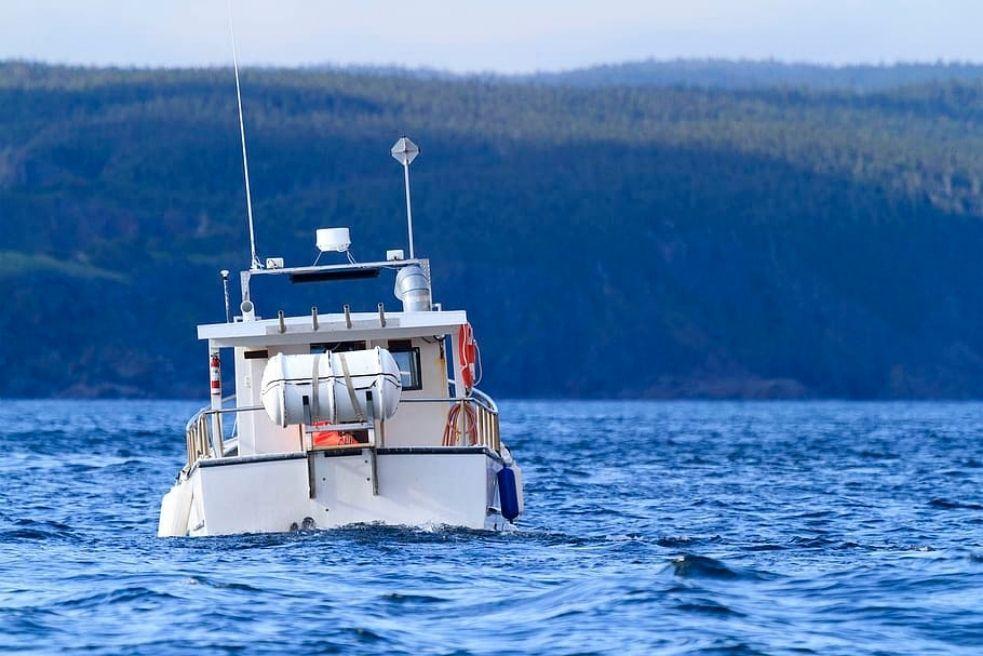
Shallow Draft Boats Explained lg ...
Sep 06, 2021
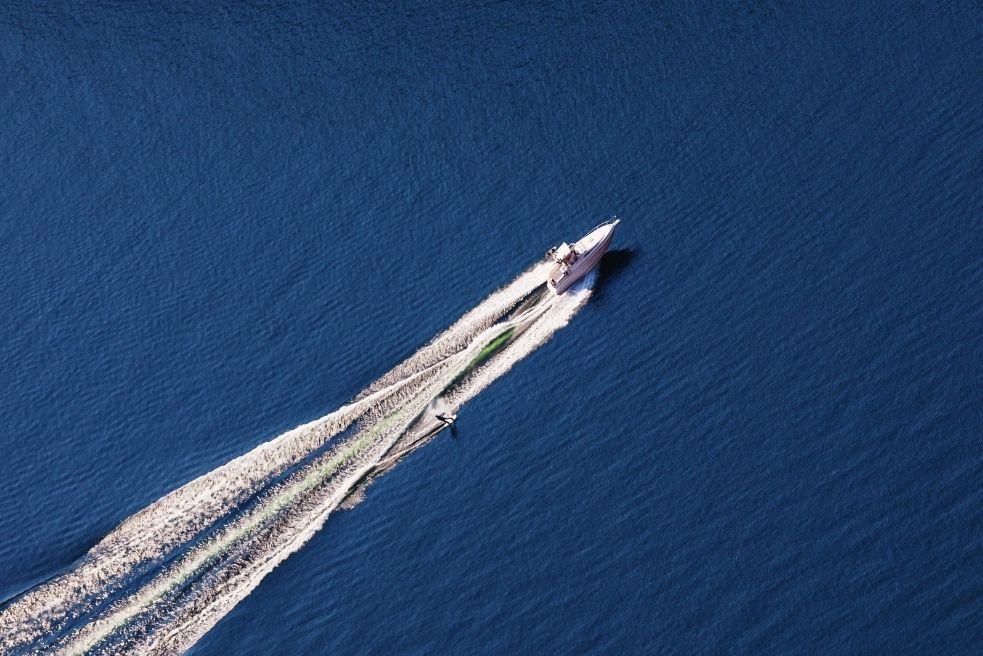
Best Boat for Open Ocean Sailing lg ...
Aug 27, 2021
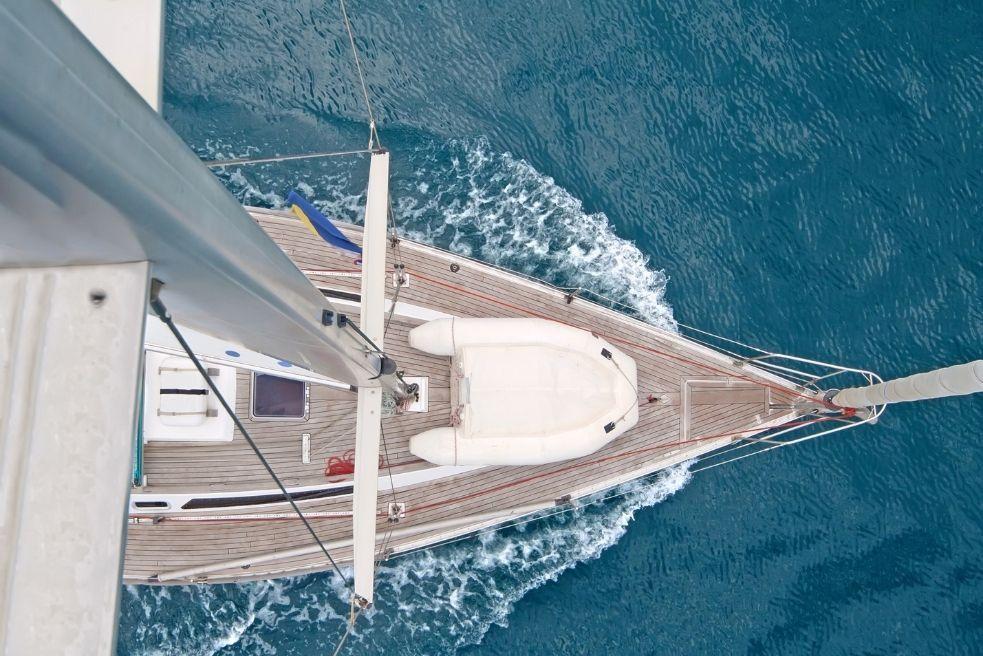
Best Boat Design for Rough Water lg ...
Aug 25, 2021
- 2024 BOAT BUYERS GUIDE
- Email Newsletters
- Boat of the Year
- 2024 Freshwater Boat and Gear Buyers Guide
- 2024 Boat Buyers Guide
- 2024 Water Sports Boat Buyers Guide
- 2024 Pontoon Boat Buyers Guide
- Cruising Boats
- Pontoon Boats
- Fishing Boats
- Personal Watercraft
- Water Sports
- Boat Walkthroughs
- What To Look For
- Watersports Favorites Spring 2022
- Boating Lab
- Boating Safety
- Ultimate Boat Giveaway

Calculating Boat Fuel Consumption
- By Brett Becker
- Updated: September 30, 2019
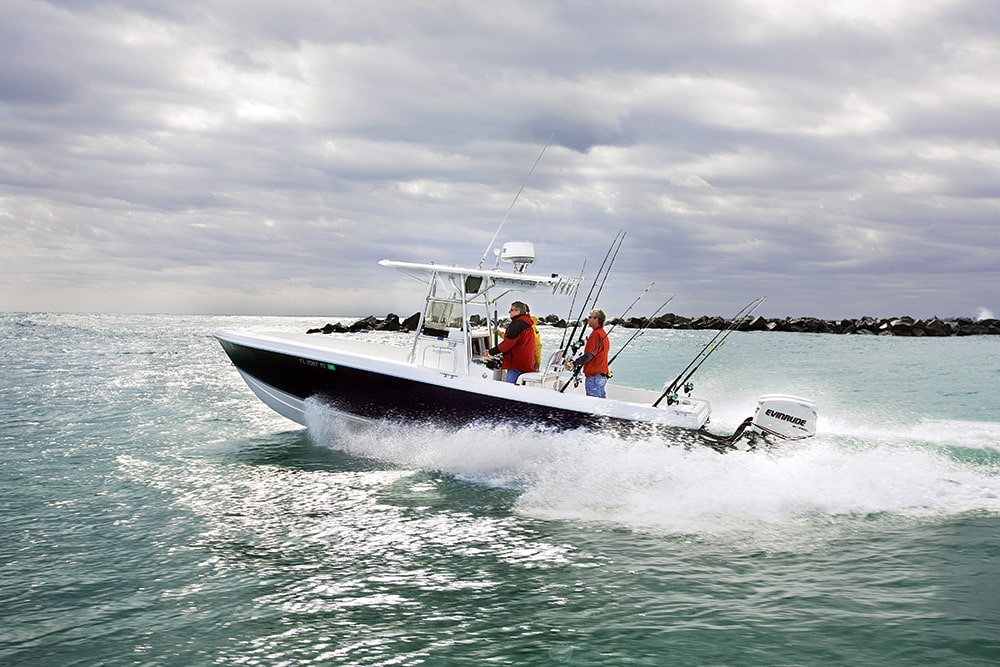
Calculating a boats fuel consumption proves important to boaters for number of reasons. With knowledge of a boat’s fuel economy-how much fuel the boat burns per mile or nautical mile of travel-boaters can estimate the range they can safely expect to run.
Some boaters go as far as to develop a boat fuel consumption chart for their boat. You can use any Boating boat test as a model for this. Of course, you can also install a fuel consumption monitor if your boat’s engine does not provide a fuel consumption readout.
Additionally, knowing your boat’s fuel consumption provides a good idea of how much it will cost you to operate the boat. When shopping for a new boat or marine engine, fuel consumption provides a major basis of comparison.
Estimating Your Boat’s Fuel Burn
It’s a different story with a boat. Since sea conditions vary more widely than road conditions, the time it takes to cover a distance varies more, so fuel consumption is measured in gallons per hour. Also, while many engines have fuel flow readouts , the ability to estimate fuel burn while shopping for a boat or engine is important. You measure fuel efficiency in pounds of fuel used per horsepower developed per hour. The pros call it “brake-specific fuel consumption.” This makes it important to know that gasoline weighs about 6.1 pounds per gallon and diesel fuel 7.2 pounds per gallon.
On average, an in-tune four-stroke gasoline engine will burn about 0.50 pounds of fuel per hour for each unit of horsepower. Likewise, a well-maintained diesel engine burns about 0.4 pounds of fuel per hour for each unit of horsepower it produces. These figures don’t take drag of the boat, sea conditions, or efficiency losses through transmissions and bearings into account. But they provide an excellent relative difference between engines when shopping.
Confused yet? Look at the mathematical examples below, and a boat’s fuel economy should become clear.
Boat Fuel Consumption Formulas and Calculator
Below is the Formula to Estimate Maximum Engine Fuel Consumption.
GPH = (specific fuel consumption x HP)/Fuel Specific Weight
Constants | Gas | Diesel SFC: .50 lb. per HP | .40 lb. per HP FSW: 6.1 lb. per gal. | 7.2 lb per gal.
300-hp Diesel Engine Example GPH = (0.4 x 300)/ 7.2 = 120/7.2 = 16.6 GPH
300-hp Gasoline Engine Example GPH = (0.50 x 300)/ 6.1 = 150/6.1 = 24.5 GPH
Keep in mind that these formulas apply when the engine is making peak horsepower, which usually is near wide-open throttle. Fuel consumption will be decreased at cruising speeds. Also remember that engines with electronically-managed fuel injection and direct injection will yield higher fuel efficiency .
To apply these formulas to your boat, just plug in its horsepower rating and multiply it by the specific fuel consumption average, then divide the product by the fuel specific weight.
Another way is to take the total engine horsepower and divide it by 10 for gas engines or .06 for diesel engines. As you can see, this formula is simpler to calculate and easier to remember. You don’t even need a pencil and paper. It’s just not as accurate as the formulas above. The result represents the approximate gallons per hour the engine will burn at wide-open throttle. For example, a 150-horse engine will use about 15 gallons per hour. Though these figures represent averages and can vary from 10 to 20 percent, they’ll put you in the ballpark so you can plan a long-distance cruise without fear of running out of gas . You can also keep track of your boat’s fuel consumption by installing a fuel monitor.
- More: Engines , fuel consumption , How-To
More How To
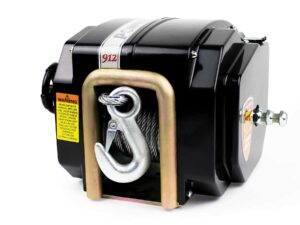
How to Choose a Trailer Winch
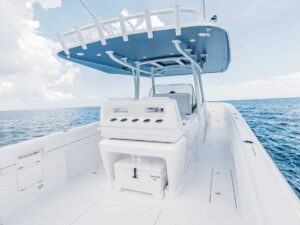
Best Non Skid Boat Deck Paint
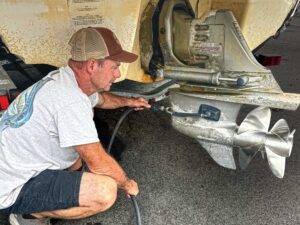
Midseason Sterndrive Maintenance
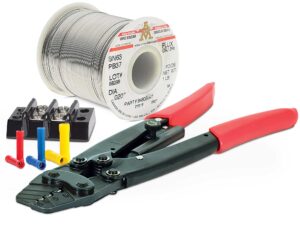
How to Properly Splice Wires on Your Boat
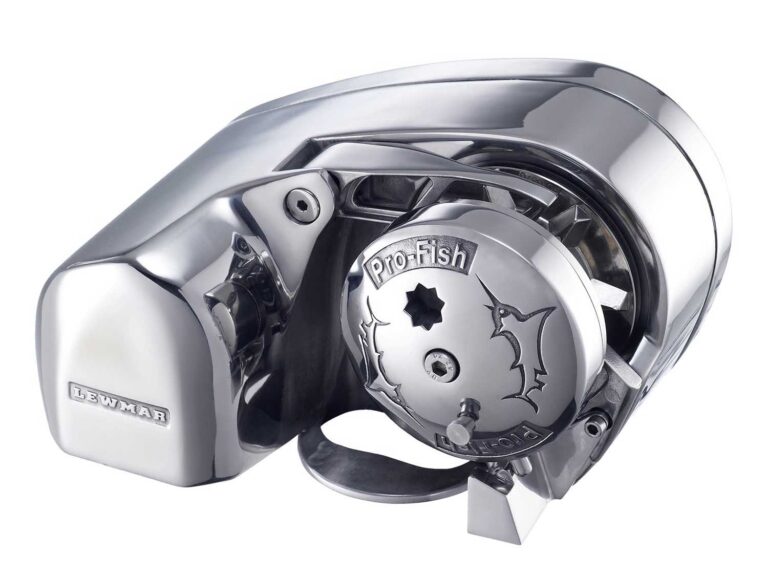
Ultimate Boat Anchor Winch Buyers’ Guide
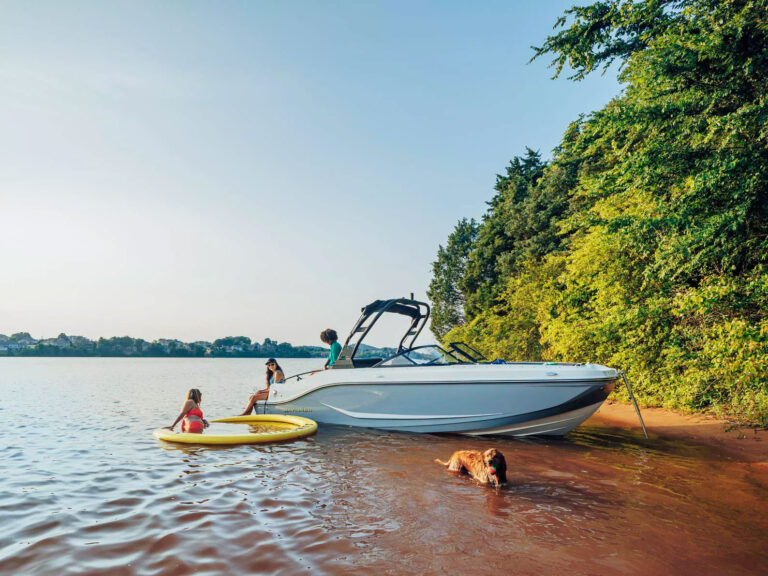
Bayliner 2024 D Series Deckboats Debut
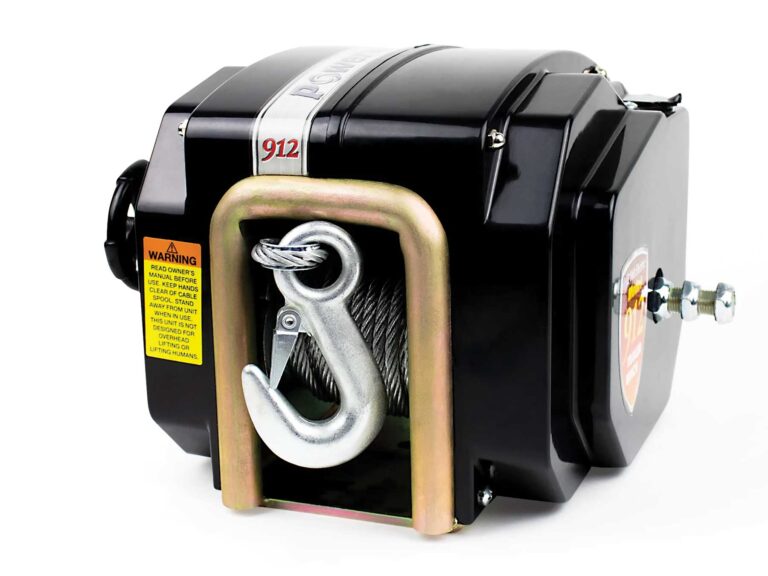
Is Your Trailer Right for Your Boat?

- Digital Edition
- Customer Service
- Privacy Policy
- Terms of Use
- Cruising World
- Sailing World
- Salt Water Sportsman
- Sport Fishing
- Wakeboarding
Many products featured on this site were editorially chosen. Boating may receive financial compensation for products purchased through this site.
Copyright © 2024 Boating Firecrown . All rights reserved. Reproduction in whole or in part without permission is prohibited.
What Fuel Do Yachts Use? (All Types Explained in Detail)
Yachts, just like cars, require fuel to operate. However, unlike cars that run on gasoline or diesel, yachts can run on a variety of fuels, from traditional fossil fuels to more eco-friendly alternatives. In this article, we'll explore the different types of fuel used on yachts in full detail.
Some of the most common yacht fuels include diesel, gasoline, biofuels, natural gas, propane fuel, and electric or hybrid fuel systems that combine diesel and electric power. Using electricity produces no emissions or noise pollution, making it an eco-friendly option. However, they have a limited range and require frequent charging.
Sailing yachts typically use diesel, biodiesel, or electric propulsion systems, with diesel being the most commonly preferred. But what type of fuel is best for a specific type of yacht? Let's find out.
- Diesel fuel is highly efficient and widely available in most marinas; however, it produces more emissions than gasoline.
- Bio-diesel fuel can be used in any diesel engine with little to no modifications; however, it is not widely available and can be more expensive than diesel.
- Electric fuel sources are virtually silent and produce zero emissions, but you may need to recharge your batteries frequently.
- Converting your yacht to use natural gas can have significant upfront costs since you will need specialized refueling infrastructure.
- Propane is widely available at marinas, is less expensive than diesel or gasoline, and can be used in any gasoline engine.
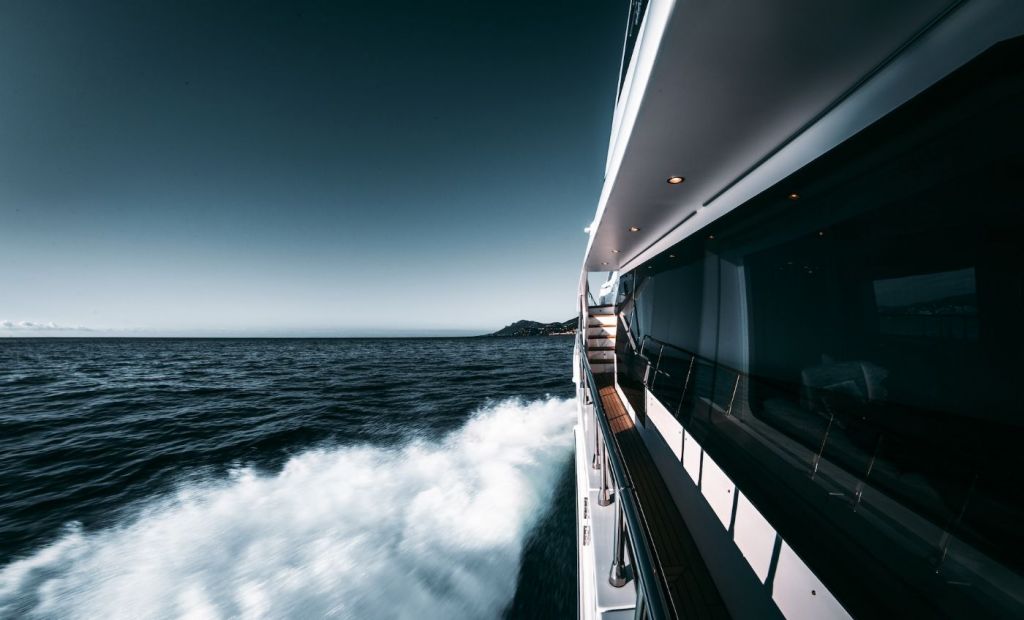
On this page:
Types of fuel used in yachts, fuel for different types of yachts, factors to consider when choosing yacht fuel.
Below is a table showing the most common types of yacht fuel and their advantages and disadvantages:
| - High energy density - Good performance - Fuel efficiency - Durability | - Higher cost - Slower acceleration - Environmental impact | |
| - Fast acceleration - Lower cost - Easy to find | - Lower energy density - Lower fuel efficiency - Less durable | |
| - Quiet operation - Environmentally friendly - Low operating costs | - Limited range - Limited speed - Higher initial cost | |
| - Lower emissions - Lower fuel cost | - Limited availability - Higher initial cost - Requires specialized infrastructure | |
| - Lower emissions - Lower fuel cost - Widely available | - Limited range - Requires specialized infrastructure - Higher initial cost | |
| - Renewable and environmentally friendly - Lower emissions | - Limited availability - Higher cost |
Diesel fuel is the most common type of fuel used in yachts
Diesel fuel is a highly efficient fuel that provides excellent performance and fuel economy. It is also widely available and can be found at most marinas and fuel docks.
Advantages of diesel fuel
- Diesel fuel has a higher energy density than gasoline, which means you can get more power from a smaller amount of fuel.
- They are known for their torque and power making them ideal for larger yachts and long-range cruising.
- Diesel engines are more fuel-efficient than gasoline engines so you can save money on fuel costs in the long run.
- Diesel engines are built to last, and they require less maintenance than gasoline engines. For more information on the life expectancy of a marine diesel engine , you can read this article.
Disadvantages of diesel fuel
- Diesel fuel is generally more expensive than gasoline.
- Diesel engines are slower to accelerate than gasoline engines.
- Diesel fuel produces more emissions than gasoline, which can have a negative impact on the environment.

Gasoline is another fuel option for yachts
Small personal boats usually use regular gasoline with 10% ethanol or lower. However, larger boats like yachts usually use off-road diesel.
Advantages of gasoline
- Gasoline engines are known for their fast acceleration, which makes them ideal for water sports and other activities that require quick bursts of speed. They are also used to power smaller types of yachts.
- Gasoline is widely available so it is easy to refuel your yacht.
Disadvantages of gasoline
- Gasoline has a lower energy density than diesel fuel.
- Gasoline engines are less fuel-efficient than diesel engines, so you'll spend more money on fuel in the long run.
- Gasoline engines are generally less durable than diesel engines, so they require more maintenance and may need to be replaced more frequently.
Bio-diesel fuel is a renewable fuel source
Bio-diesel fuel is a renewable fuel source that is made from vegetable oils, animal fats, or recycled restaurant grease. It is a clean-burning fuel that produces fewer emissions than traditional diesel fuel. Bio-diesel fuel can be used in any diesel engine with little to no modifications.

Advantages of bio-diesel
- Bio-diesel is made from renewable sources and produces fewer emissions than diesel.
- Bio-diesel produces fewer emissions than diesel, which makes it a more environmentally friendly option.
Disadvantages of bio-diesel
- Bio-diesel is not widely available.
- Bio-diesel is generally more expensive than diesel.
Electric and hybrid fuel systems are becoming more common in yachts
These systems use electric motors and batteries to power the yacht, with a diesel or gasoline generator as a backup. Electric and hybrid systems are quiet, efficient, and environmentally friendly.
Advantages of electric motor fuels
- Electric motors are virtually silent, which makes for a more peaceful cruising experience.
- Electric motors produce zero emissions.
- Electric motors are very efficient, so you'll spend less money on fuel and maintenance in the long run.
Disadvantages of electric motor fuels
- Electric motors have a limited range so you'll need to recharge your batteries frequently.
- Electric motors are generally slower than gasoline and diesel engines.
- Electric propulsion systems are generally more expensive than traditional gasoline or diesel engines.
Natural gas fuel can also be an option for yachts
Natural gas is a clean-burning fuel that produces fewer emissions than diesel or gasoline. However, it is not widely available at marinas and fuel docks. If you plan on using natural gas as your yacht's primary fuel source, you might need to install a natural gas storage tank on board.
Advantages of natural gas
- Natural gas produces fewer emissions than diesel or gasoline, which makes it a more environmentally friendly option.
- Natural gas is generally less expensive than diesel or gasoline, which can help reduce your operating costs.
Disadvantages of natural gas
- Natural gas is not widely available so it's difficult to find refueling stations.
- Converting your yacht to use natural gas can be expensive
- Natural gas requires specialized refueling infrastructure
Propane is another clean-burning fuel option for yachts
Propane is widely available at marinas and fuel docks and is less expensive than diesel or gasoline. It can be used in any gasoline engine with little to no modifications.
Advantages of propane
- Propane produces fewer emissions
- It is generally less expensive, which can help reduce your operating costs.
- Propane is widely available, which makes it easy to refuel your yacht.
Disadvantages of propane
- Propane has a lower energy density than diesel or gasoline.
- Propane requires specialized refueling infrastructure, which can be difficult to find in some areas.
- Converting your yacht to use propane can be expensive.
Below is a table showing the different types of fuel used for different types of yachts:
| Diesel, biodiesel, electric | |
| Diesel, gasoline, biodiesel, electric | |
| Diesel, gasoline, biodiesel, electric | |
| Diesel, biodiesel, natural gas | |
| Diesel, gas turbine, hybrid, electric | |
| Diesel, gas turbine, hybrid, electric |
Fuel for sailing yachts
Sailing yachts typically use diesel, biodiesel, or electric propulsion systems. Diesel engines are commonly used in larger sailing yachts that require a lot of power, while biodiesel is often used by eco-conscious yacht owners who want to reduce their environmental impact.
Electric propulsion systems are becoming increasingly popular in sailing yachts due to their quiet operation and zero emissions, making them an excellent choice for eco-conscious yacht owners.
If you want to know how much fuel a sailboat consumes , you can read this article.
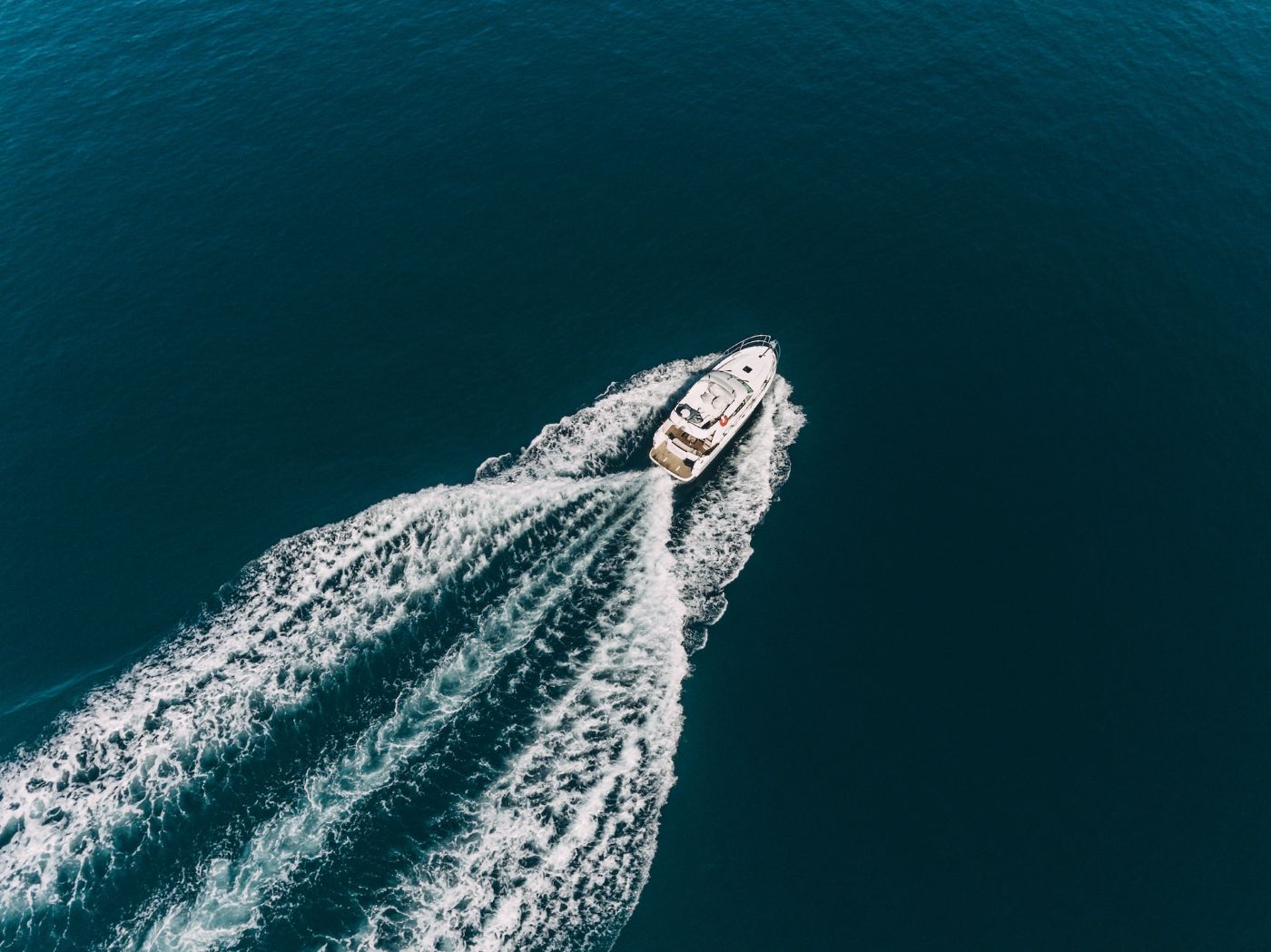
Fuel for motor yachts
Motor yachts can use a variety of fuel types, including diesel, gasoline, biodiesel, and electric. Diesel engines are commonly used in larger motor yachts that require a lot of power, while gasoline engines are often used in smaller sporty yachts that are designed for speed and agility.
Biodiesel is often used by eco-conscious yacht owners who want to reduce their environmental impact. Electric motors are becoming more popular on motor yachts, particularly for smaller vessels. However, they may have a limited range and require frequent recharging, which can be a challenge on longer trips.
Fuel for catamarans
Generally, diesel fuel is the most common and preferred fuel for catamaran yachts because it provides better fuel efficiency, longer range, and greater power compared to gasoline. However, some catamaran yachts may also use alternative fuels such as biofuels or electric propulsion systems.
If you own a catamaran or plan to buy one , fuel costs are one of the recurring costs you might need to account for.
Fuel for trawlers
Traditionally, trawlers have used diesel as their primary fuel source because diesel engines are known for their efficiency and durability. Diesel fuel is also widely available and relatively inexpensive compared to other fuel options.
However, there are alternative fuel options that are becoming more popular in the marine industry, such as liquefied natural gas (LNG) and biodiesel. LNG is a cleaner-burning fuel that emits fewer greenhouse gases and pollutants than diesel, making it a more environmentally friendly option.
Biodiesel is a renewable fuel source made from vegetable oils or animal fats, which reduces dependence on fossil fuels and has lower emissions.
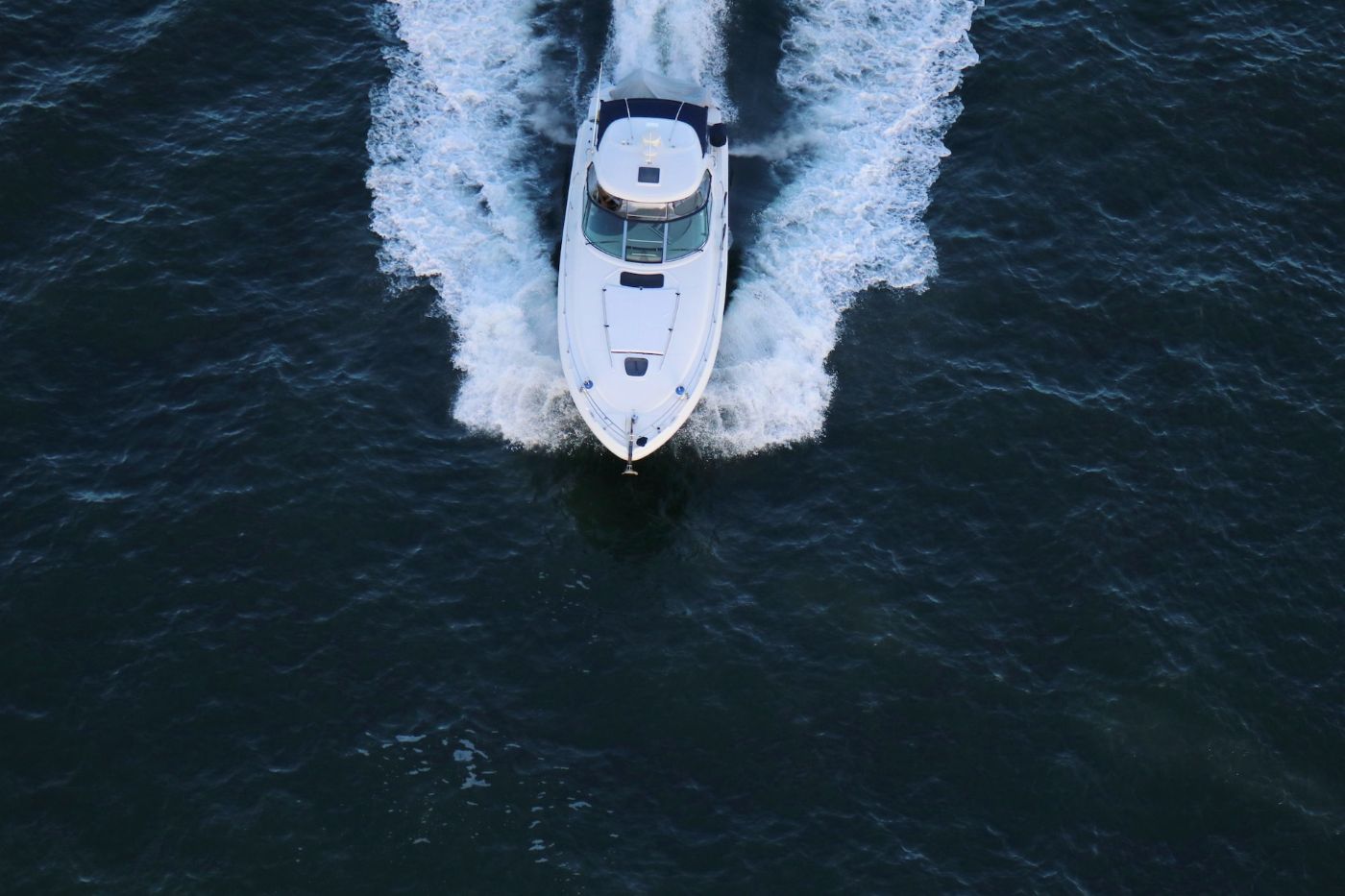
Fuel for superyacht
Diesel fuel is often the preferred choice for superyachts due to its high energy density and efficient combustion properties. Diesel fuel is also readily available at most ports around the world, making it a convenient choice for yacht owners and operators.
However, some superyachts may also use alternative fuels such as biodiesel or liquefied natural gas (LNG) for environmental or cost-saving reasons. Some superyachts also use gas turbines or electric propulsion systems as an alternative to traditional diesel engines.
Gas turbines are known for their high power output and efficiency, making them a popular choice for larger yachts that require high speeds or long-range cruising capabilities. Electric propulsion systems, on the other hand, are becoming increasingly popular due to their environmental benefits and quiet operation.
Electric propulsion systems can be powered by batteries, fuel cells, or a combination of both, and can provide a smooth and efficient ride for passengers. However, electric propulsion systems may not be suitable for all types of superyachts, as they typically require a significant amount of battery storage and charging infrastructure, which can be challenging to install and maintain on larger vessels.
When chartering a superyacht , fuel costs generally cost around $4,760 to $11,900 per day (depending on distance and speed).
Fuel for megayacht
In general, the most common fuels used for megayachts are diesel and gasoline. Diesel is the preferred fuel for larger yachts because it is more efficient and has a longer range than gasoline.
Diesel engines are also more durable and require less maintenance than gasoline engines. Additionally, it is more widely available in most parts of the world, making it easier to refuel during long voyages.
On the other hand, gasoline is preferred for smaller yachts because it is more affordable and easier to handle than diesel. Gasoline engines are also quieter and more responsive than diesel engines so they are ideal for high-speed cruising.
In recent years, there has been a growing interest in using alternative fuels such as biodiesel, hydrogen, and electric power for mega yachts. These fuels are more environmentally friendly and can help reduce the carbon footprint of yachting. However, they are still in the early stages of development and may not be suitable for all types of yachts.
Here are some of the most important factors to consider when choosing the right fuel for your yacht:
Consider the cost of fuel when choosing the right fuel for your yacht
Below is a table comparing the estimated pricing of alternative yacht fuels as compared to traditional fuel:
| 10-30% more expensive than diesel fuel | |
| 20-30% less expensive than diesel or gasoline | |
| 30-50% less expensive than diesel or gasoline | |
| 50-70% less expensive than traditional fuels |
Propane, natural gas, and electric power can certainly be used as alternative fuels for yachts, and they can be cost-effective options in some cases. However, propane and natural gas may not be readily available in all locations, and electric power requires a significant amount of battery storage and charging infrastructure, which can be expensive and may not be practical for all yachts.
Availability is another important factor to consider
Some areas may have limited access to certain types of fuel due to a lack of infrastructure, regulations, or other factors. For example, biodiesel may not be readily available in some areas, while natural gas and propane may require additional storage equipment that may not be practical for all yachts.
Therefore, you might need to plan ahead and make sure you have enough fuel for your trip. This means considering the distance you will be traveling and the availability of fuel along your route. If you are traveling to remote areas or areas without access to the necessary infrastructure, it may be more practical to choose a fuel that is more widely available.
The environmental impact of fuel is a growing concern for many yacht owners
Some fuels are more environmentally friendly than others, so you can perhaps try to choose a fuel that minimizes your yacht's impact on the environment. Biofuels and electric power are becoming more popular options for yacht owners who want to reduce their carbon footprint.
The type of fuel you choose must be compatible with your yacht's engine
Some engines are designed to run on specific types of fuel, and using the wrong fuel can cause significant damage to the engine and even pose safety risks.
A gasoline engine is designed to run on gasoline fuel, while a diesel engine is designed to run on diesel fuel. If you mistakenly use gasoline in a diesel engine, the fuel injection system can be damaged, and the engine may not start or run properly.
The distance and duration of your yacht trips can also affect your choice of fuel
If you're planning a long trip, you might need to consider the range of your fuel. Some fuels have a longer range than others, meaning they can power your yacht for a longer distance and duration before needing to refuel.
Diesel fuel generally has a longer range than gasoline, making it a popular choice for long-range yacht trips. This is because diesel engines are generally more fuel-efficient than gasoline engines and can travel farther on a tank of fuel.
If you're only planning a short trip, you may be able to use less expensive fuel, such as regular gasoline. This can save you money on fuel costs, but ensure that the fuel you choose is still appropriate for your yacht's engine.
Leave a comment
You may also like, average cost of buying & owning a yacht in dubai (2023).
In 2023, the yacht market in Dubai continues to flourish, offering you a wide range of options to own the perfect yacht for your needs. In this article, we will …
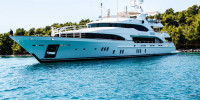
2023 Cost To Rent a Yacht For a Week (7 Helpful Examples)


The Real Cost of Buying & Owning a 50-Foot Yacht
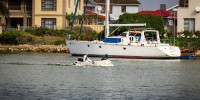
Cost of Buying & Owning a Small Yacht (Detailed Breakdown)

How Much Fuel Does a Sailboat Use?
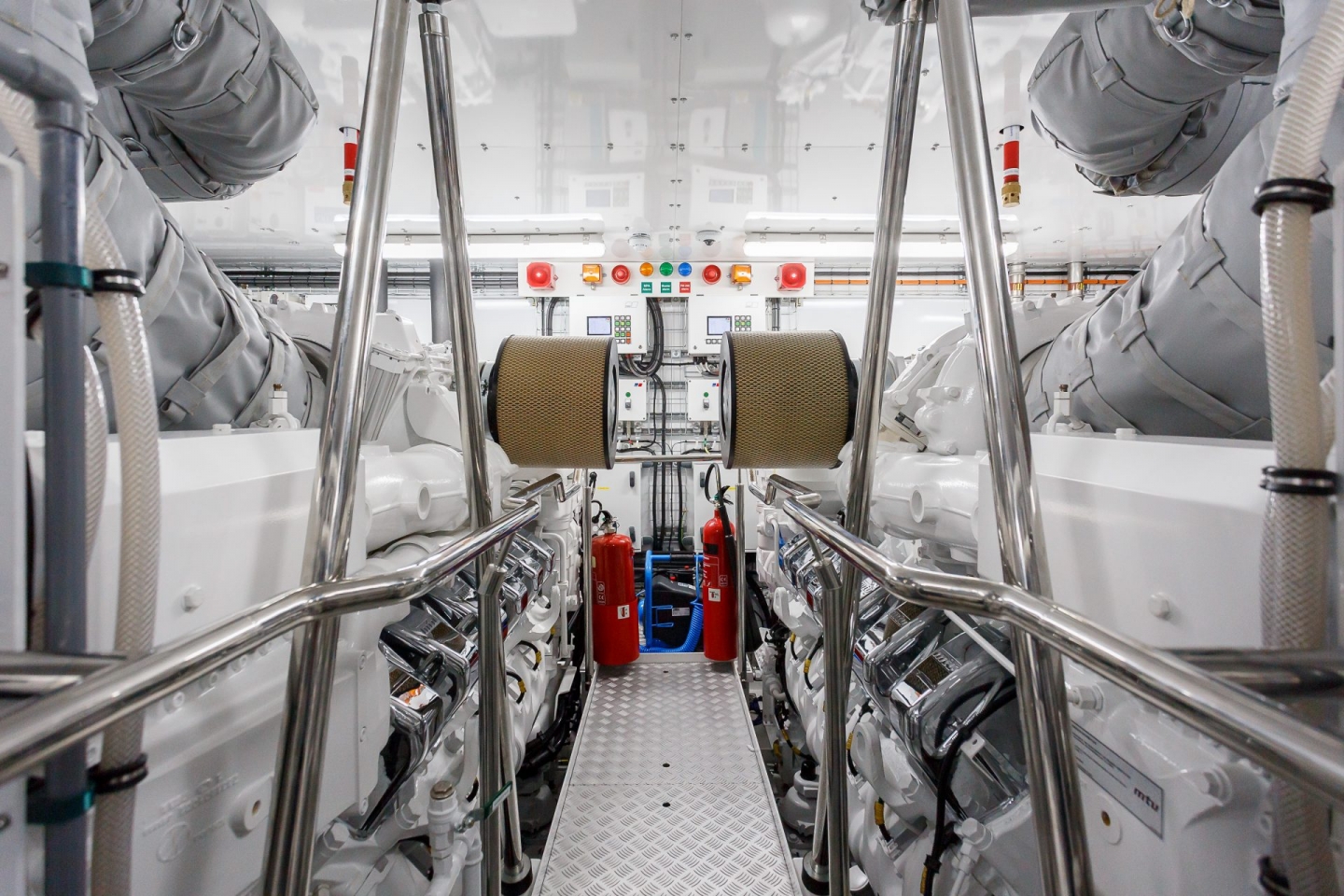
Superyachts are the most elite asset a person can own, your own private yacht to cruise the world’s most beautiful destinations. Some yachts cross the Atlantic Ocean twice a year between the Mediterranean and Caribbean while others embark on world cruises.
Fuel is one of many annual running costs of a yacht and not only does the yacht need fuel for cruising; the generators require fuel to keep the vessel running while at anchor and underway, as well as many of the water sports toys requiring fuel.
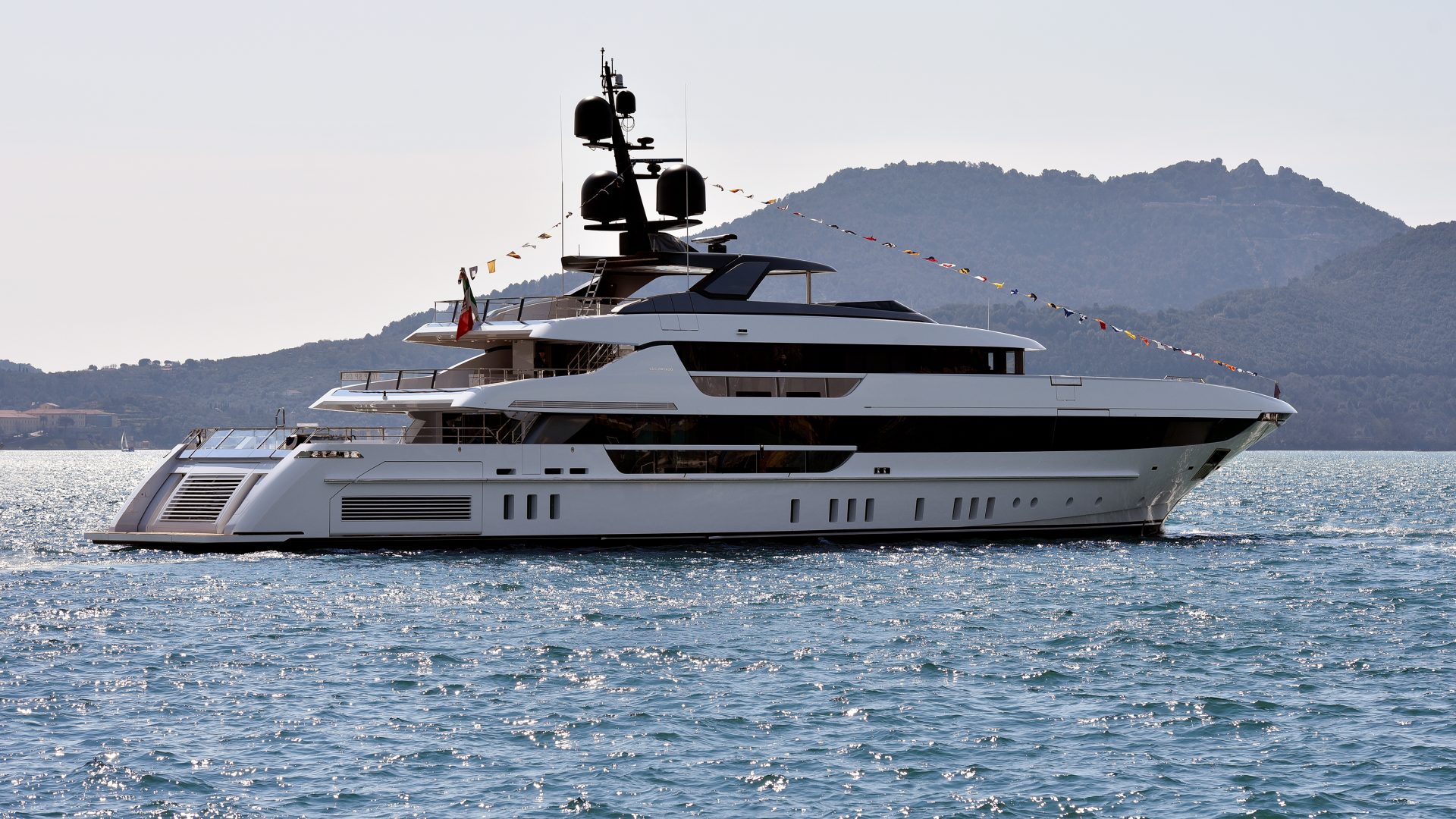
So how much do they really consume?
According to the Yachting Pages, the longest Superyacht in the world, 180m M/Y Azzam, holds 1,000,000 litres of fuel. To put it into perspective, that is the equivalent of filling a regular hatchback car 23,800 times or six Boeing 747 commercial airliners.
West Nautical’s Vessel Manager, Tony Hildrew, a former Yacht Chief Engineer said: “Fuel is the single biggest expense when it comes to yacht operations, it is estimated that the global spend on fuel is around $150bn annually however this shouldn’t put you off, there are a number of ways to ensure your fuel consumption doesn’t get out of hand. Implementing a Ships Energy Efficiency Management Plan or SEEMP for short is a great way to keep fuel costs down without compromising on your cruising experience.”
Each yacht will consume fuel differently for a number of reasons – the size and make of the engines, how often the yacht is using generators and the number of tenders and water sports toys on board that require fuel. For example, if the yacht is out at anchor and running on generators 90% of the time, the fuel consumption will be much higher than a yacht that is in a marina at night and connected to shore power and water.
Another factor that will affect fuel consumption is the yacht’s itinerary as the sea conditions will impact how much fuel the engines consume.
Fuel consumption is often measured in litres per hour, the best way to calculate the total fuel consumption for your itinerary is by using a fuel calculator like the one found here on the West Nautical website.
You will be able to input the start and ending points of your cruise on the map, this will automatically update the distance table. The next step is to enter the speed, fuel consumption and cost of fuel per litre to determine the cost of the trip.
Here is an example: A fast 30m yacht cruising at 20 knots will consume roughly 400 – 500 litres depending on the engine type, this would equate to the total consumption of 2500 litres for a distance of 100 nautical miles.
Another example is, a 70m yacht looking to travel 100 nautical miles with the engines burning 1000 litres per hour would add up to a total consumption of 8335L for that passage. Depending on where the yacht bunkered, the estimated cost with the price per litre being on the low end at €0.90 per litre would cost a total of €7501.50. An example of a 100 nautical mile passage would take you from Saint Tropez to The North Coast of Corsica.
Fuel prices fluctuate depending on which country you bunker in and some places you bunker offer tax free fuel such a Gibraltar and Montenegro. Fuel prices can vary but typically costs between €0.80 and €1.30 per litre.
Yacht charter, sales and management company West Nautical added; “Fuel costs should be at the top of any yacht owner and captain's minds for two reasons: to minimise costs as well as reduce the environmental impact of burning unnecessary fuel. The superyacht charter market, more than most other markets, relies on pristine waters for their guests to enjoy their holiday. If the oceans in popular charter destinations are not maintained, it will decrease the demand for yacht charter and therefore the revenue for owners.” “If you are looking for expertise in operational management and engineering in order to plan a SEEMP, West Nautical would be delighted to assist.”
Boat Reviews
- Boats Specs
- Marine Pros
- Boat Insurance
- Boat Warranties
- Boat Transport
- Boat Towing
- Marine Forecasts

Your Ultimate Boating Resource

Calculating Boat Fuel Consumption for Smart Boating
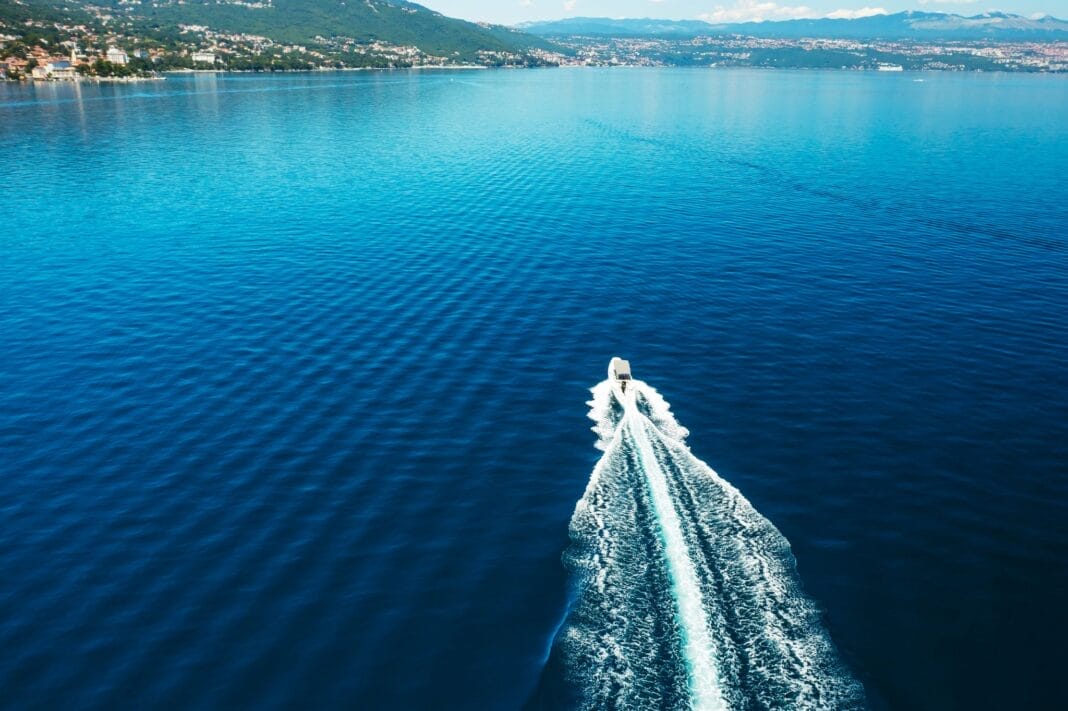
Efficiently managing fuel consumption is a critical skill for boaters, not only affecting the range of your vessel, but also impacting overall expenses. But unlike cars or trucks, calculating a boat’s fuel usage is more complex due to constantly shifting sea conditions.
In this comprehensive guide, we will dive into the intricacies of estimating and computing fuel consumption for boats, empowering you to make informed choices for an optimal boating experience.
Key Points for Fuel Consumption
Determining the amount of fuel your boat consumes holds several significant advantages:
Range Projection
Understanding your boat’s fuel economy–the amount of fuel needed per mile or nautical mile–helps anticipate the safe distance you can cover with a specific fuel capacity.
Cost Analysis
Calculating fuel usage offers valuable insights into operational costs, particularly when comparing different boats or marine engines for purchase.
Comparison Tool
Many boaters rely on fuel consumption charts or use boat tests as benchmarks for comparison. This allows for smarter decision-making when selecting a new boat or engine based on efficiency.
Due to the ever-changing nature of sea conditions, boat fuel efficiency is measured in gallons per hour (GPH). The metric used is pounds of fuel consumed per horsepower generated per hour, commonly referred to as ‘brake-specific fuel consumption.’
Keep in mind that gasoline weighs approximately 6.1 pounds per gallon, while diesel comes in at around 7.2 pounds per gallon.
The relentless hum of a well-tuned four-stroke gasoline engine can consume an impressive 0.50 pounds of fuel per hour for every unit of horsepower it churns out.
And let’s not forget the tireless diesel engine, which burns through 0.4 pounds of fuel per hour for each unit of horsepower it generates.
But be warned, these numbers only scratch the surface–factors like boat drag, sea conditions, and efficiency losses can greatly affect your fuel burn.
To navigate through this maze, use this formula to estimate your boat or engine’s fuel consumption:
GPH = (specific fuel consumption x HP) / Fuel Specific Weight
Gas = 6.1 lb. per gal
Diesel = 7.2 lb. per gal
The key to unlocking maximum horsepower lies in these formulas, optimized for the engine’s peak performance at wide-open throttle. But don’t be fooled–fuel consumption actually decreases during cruising speeds.
And with advanced electronic and direct fuel injection systems, efficiency is taken to a whole new level.
Unlocking Boating Performance
The roar of the boat motor and the number of miles it can go on a single gallon of fuel are crucial elements to consider while out on the water.
These two concepts, known as ‘boat motor pitch’ and ‘miles per gallon (MPG),’ hold the key to unlocking optimal boating performance. So pay attention, because your next adventure may depend on it.
Boat Motor Pitch
The pitch of a boat motor typically refers to the pitch of the boat’s propeller. The propeller pitch is the distance that the propeller would move in one revolution if it were moving through a solid, like a screw through wood. It’s measured in inches.
A higher pitch means the propeller is designed to move the boat further with each revolution, which can be efficient for speed but may reduce the engine’s revolutions per minute (RPM).
A lower pitch propeller will move the boat less distance per revolution but can increase RPM, potentially offering better acceleration and power for carrying heavy loads.
Choosing the right propeller pitch is crucial for optimal boat performance. It needs to be matched with the boat’s size, weight, and the motor’s power to ensure the engine operates within its recommended RPM range for peak efficiency.
Miles Per Gallon
MPG in the context of boats refers to the fuel efficiency of the boat. It indicates how many miles the boat can travel on one gallon of fuel.
Calculating MPG in boats is more complex than in cars due to variable factors like water conditions, boat weight, and hull design. A boat’s MPG can vary significantly based on these factors.
Higher MPG indicates better fuel efficiency, which is desirable for reducing fuel costs and environmental impact.
Boaters often look for ways to improve their MPG by optimizing the boat’s load, maintaining the engine, and using the boat at efficient speeds.
Assessing Fuel Usage and MPG
Begin by filling your boat’s tank to a precise level and recording the gallons added.
Then, set sail and take note of the distance traveled while considering sea conditions and cruising speed.
Upon return to the dock, refill the tank to the same level and record the additional gallons needed.
Using this information, you can determine the amount of fuel consumed during your trip and calculate your MPG using the formula: Distance Traveled / Gallons Consumed.
This equation is a valuable tool for determining the boat’s fuel efficiency and can be used to plan more efficient journeys in the future.
Many modern engines come equipped with gauges that display the total fuel consumption during a trip, as well as real-time updates on fuel efficiency to assist in saving fuel.
Maximizing Fuel Efficiency
The rumble of a boat motor is like a heartbeat to any avid boater. But did you know that how you trim your boat and manage fuel can make or break your entire experience on the water?
These two concepts are key players in maximizing performance and efficiency, leading you to smooth sailing and unforgettable adventures.
Boat Motor Trim
The trim of a boat motor refers to the angle of the outboard motor or stern drive in relation to the transom of the boat. Adjusting the trim changes the angle at which the hull meets the water.
Proper trimming can significantly affect the boat’s performance. When a boat is trimmed correctly, it runs more efficiently, achieving optimal speed and handling. The goal is to find the trim sweet spot where the boat planes smoothly on top of the water with minimal resistance.
Trimming the motor too low (in) causes the bow of the boat to sit lower in the water, increasing drag and reducing speed and efficiency. Trimming too high (out) can cause the propeller to ventilate, leading to loss of propulsion and potential engine damage.
Fuel Economy
Fuel economy in boating refers to how efficiently a boat uses fuel, typically measured in GPH or MPG.
Optimizing the trim of the boat can lead to better fuel economy. When a boat is properly trimmed, it reduces drag and allows the boat to move through the water with less effort and power. This efficiency translates into less fuel consumption for the distance traveled.
Additionally, a well-trimmed boat can also reduce engine strain and potentially extend the life of the motor.
Balancing Trim and Fuel Economy
Achieving the best fuel economy involves finding the optimal trim setting where the boat runs most efficiently. This setting varies depending on the boat’s design, load, water conditions, and speed.
Boaters often use trim tabs or power trim (adjustable with buttons or a lever on the throttle control) to adjust the trim level while underway, constantly fine-tuning for the best performance and fuel efficiency.
It’s important to monitor the boat’s performance indicators such as speed, RPM, and fuel consumption gauge, if available, to determine the most efficient trim setting.
Final Thoughts
Fuel up for success on the open seas by mastering your boat’s fuel consumption and miles per gallon. With this crucial knowledge, boaters can navigate their vessels with confidence and make informed decisions for efficient and cost-effective travels.
Don’t sail blindly–install a fuel monitoring system to track your consumption for ongoing management and worry-free long-distance cruises.
RELATED ARTICLES
Overview of the 2024 sea-doo rxp-x 325, overview of the 2024 parker offshore 2900 cc, what your boat’s beam is and why it matters, power cats of 2024: ultimate guide to the top power catamarans this year, navigating the heat: 10 safety tips for a safe boat ride in the summer heat, latest posts, don't miss, our newsletter.
Get the latest boating tips, fishing resources and featured products in your email from BoatingWorld.com!
What type of wood is used for pier pilings?
What is the difference between a dock and a floating pier, what is the proper technique for pulling a beginner wakeboarder, what does ‘no wake’ mean on a lake, what is the difference between wash and wake, highs, lows, and tidal know-how: a deep dive into ocean currents, 10 essential tips for fishing near private property, the benefits of using a drift sock: guidance for anglers, lure fishing: secrets for imitating live bait and attracting fish, explore the untapped depths of america’s best bass fishing spots, outboard motor maintenance: tips for keeping your engine in top shape, the essential boat tool kit: tools every boater needs, diy boat building: 8 tips and tricks for building your own vessel, the art of miniature maritime craftsmanship: ship in a bottle, antifouling paints: a guide to keeping your boat shipshape, beginner’s guide to standup paddle boarding: tips and techniques, boating for fitness: how to stay active on the water, kayak safety: how to stay safe on the water, anchoring in a kayak or canoe: how to secure your small boat, overview of the 2024 yamaha 252sd, overview of the 2024 tiara yachts 48 le, overview of the 2024 bass cat jaguar sts, 2024 pursuit os 445: an overview, 2024 aquila 47 molokai review, 2024 sea-doo switch 13 sport review, gear reviews, megabass oneten max lbo jerkbait review, fortress anchors fx-7 anchoring system review, fortress anchors fx-11 anchoring system review, fortress anchors commando anchor kit review, fortress anchors aluminum anchors review, stay in touch.
To be updated with all the latest news, offers and special announcements.
- Privacy Policy

How Much Fuel Does a Boat Use Per Hour? A Comprehensive Guide
Boating enthusiasts and boat owners alike often wonder how much fuel their boat uses per hour.
The answer to the question of how much fuel does a boat use is not straightforward, as fuel consumption can vary depending on several factors. Boat size, weight, engine type, and speed are just a few examples of the variables that can affect fuel usage.
Understanding how much fuel a boat uses per hour is crucial for boaters who want to plan their trips and budget accordingly. Furthermore, knowing how to calculate fuel consumption can help boaters make informed decisions when shopping for a new boat or engine.

In this article, we will explore the factors that influence fuel consumption in boats and provide tips on how to estimate fuel usage. By the end of this article, readers will have a better understanding of how much fuel their boat uses per hour and how to optimize their fuel consumption.
Understanding Fuel Consumption in Boats
Boat fuel consumption can vary significantly depending on various factors. Understanding these factors is crucial to estimate how much fuel a boat will consume in a given period. This section will discuss some of the critical factors that affect fuel consumption and how to calculate it.
Factors Affecting Fuel Consumption
- Boat Type and Size: The type and size of the boat have a significant impact on fuel consumption. Smaller boats tend to consume less fuel than larger boats. For example, a 20-foot boat will consume less fuel than a 40-foot boat with the same engine.
- Engine Type and Size: The type and size of the engine also play a crucial role in fuel consumption. A larger engine will consume more fuel than a smaller engine, even if both are of the same type. Gasoline engines tend to consume more fuel than diesel engines.
- Weight: The weight of the boat and its load can affect fuel consumption. A heavier boat will require more fuel to move than a lighter boat.
- Speed: The speed at which the boat is traveling can significantly impact fuel consumption. Boats that travel at higher speeds tend to consume more fuel than boats that travel at lower speeds.
- Weather and Water Conditions: Weather and water conditions can affect fuel consumption. Boats traveling against the tide or in rough water will consume more fuel than boats traveling with the tide or in calm water.
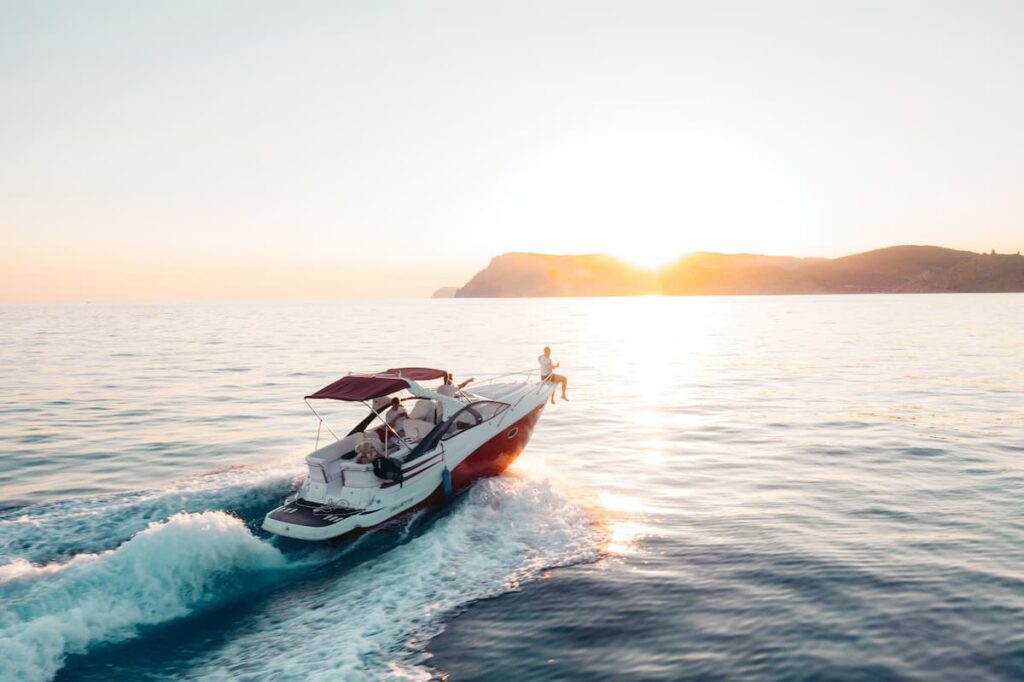
Calculating How Much Fuel Does a Boat Use Per Hour
To calculate fuel consumption, you need to know the fuel burn rate of the engine. The fuel burn rate is the amount of fuel the engine consumes per hour. You can calculate the fuel burn rate by dividing the engine’s horsepower by the fuel consumption rate.
For example, if an engine has a horsepower of 100 and consumes 10 gallons of fuel per hour, the fuel burn rate would be 10/100, which is 0.1 gallons per horsepower per hour.
Once you know the fuel burn rate, you can estimate how much fuel the boat will consume in a given period. For example, if the boat travels at a speed of 20 knots and has a fuel burn rate of 0.1 gallons per horsepower per hour, and the engine has 200 horsepower, the boat will consume 20 gallons of fuel per hour.
In conclusion, understanding fuel consumption in boats requires knowledge of several critical factors, including boat type and size, engine type and size, weight, speed, and weather and water conditions. Calculating fuel consumption involves determining the fuel burn rate of the engine and estimating how much fuel the boat will consume in a given period.
Types of Boats and Their Fuel Consumption
When it comes to fuel consumption, different types of boats have different requirements. Factors such as the boat’s size, weight, and speed all play a role in determining how much fuel it will consume per hour. Here are some common types of boats and their typical fuel consumption rates.
Fishing Boats
Fishing boats are typically smaller and slower than other types of boats, which means they use less fuel. On average, a fishing boat will use between 3 and 8 gallons of fuel per hour at cruising speed.
Pontoon Boats
Pontoon boats are popular for leisurely cruising and entertaining. They are larger than fishing boats and have a flat bottom, which makes them more stable. However, this also means they use more fuel. A pontoon boat will typically use between 5 and 15 gallons of fuel per hour at cruising speed.
Bass boats are designed for fishing and are typically smaller and faster than other types of boats. They are also more fuel-efficient, using between 3 and 6 gallons of fuel per hour at cruising speed.
Center Console Boats
Center console boats are versatile and can be used for fishing, cruising, and water sports. They are larger than bass boats and typically use between 10 and 20 gallons of fuel per hour at cruising speed.
Cabin Cruiser Boats
Cabin cruiser boats are designed for overnight trips and have a cabin with sleeping quarters and a bathroom. They are larger and heavier than other types of boats, which means they use more fuel. A cabin cruiser boat will typically use between 20 and 30 gallons of fuel per hour at cruising speed.
Bowrider Boats
Bowrider boats are popular for water sports and leisurely cruising. They are typically smaller than cabin cruiser boats but larger than fishing boats. A bowrider boat will typically use between 5 and 15 gallons of fuel per hour at cruising speed.
Overall, the fuel consumption of a boat depends on various factors such as boat size, weight, and speed. Understanding the fuel consumption of different types of boats can help you make an informed decision when choosing a boat that meets your needs while minimizing your fuel costs.
Engine Size and Power
Understanding horsepower.
When it comes to boat engines, horsepower is a crucial factor in determining how much fuel a boat will consume per hour. Horsepower is a measure of the engine’s power output, and it directly affects the speed and performance of the boat. The more horsepower an engine has, the faster the boat will go, but it will also consume more fuel.
How Engine Size Affects Fuel Consumption
Another important factor that affects fuel consumption is the engine size. The size of the engine is measured in horsepower, and it can range from small outboard motors with 9.9 hp to large inboard engines with over 300 hp. In general, larger engines consume more fuel than smaller engines, but they also provide more power and speed.
The type of engine is also important when it comes to fuel consumption. Two-stroke engines are known to be less fuel efficient than four-stroke engines, but they are also lighter and provide more power. Four-stroke engines, on the other hand, are more fuel efficient and produce less emissions , but they are heavier and provide less power.
The weight of the boat and the drag created by the hull also play a role in fuel consumption. Heavier boats require more power to move through the water, which means they will consume more fuel. Boats with a sleek, streamlined hull design will create less drag and require less power to move through the water, resulting in lower fuel consumption.
Here is a table that shows the average fuel consumption for different engine sizes:
| Engine Size | Fuel Consumption (Gallons per Hour) |
|---|---|
| 9.9 hp | 0.5 – 1.5 |
| 15 hp | 0.75 – 2 |
| 20 hp | 1 – 3 |
| 25 hp | 1.5 – 3.5 |
| 40 hp | 2.5 – 6 |
| 50 hp | 3 – 7 |
| 60 hp | 3.5 – 8 |
| 75 hp | 4 – 10 |
| 90 hp | 5 – 12 |
| 115 hp | 6 – 15 |
| 175 hp | 10 – 25 |
| 200 hp | 12 – 30 |
| 225 hp | 14 – 35 |
| 250 hp | 16 – 40 |
| 20 – 50 |
It’s important to note that these numbers are just averages, and actual fuel consumption will depend on a variety of factors, including boat weight , hull design, and weather conditions.
Cruising Speed and Fuel Efficiency
Understanding cruising speed.
Cruising speed is the speed at which a boat travels comfortably and efficiently. It is important to understand that cruising speeds vary depending on the type of boat, weather conditions, water conditions, and the number of passengers on board. In general, most boats have a cruising speed of around 20-30 knots.
When a boat is traveling at its cruising speed, it is operating at its most efficient fuel consumption rate. Going faster than the cruising speed can result in a significant increase in fuel consumption. On the other hand, going slower than the cruising speed can also result in increased fuel consumption as the boat struggles to maintain speed.
How to Optimize Fuel Efficiency
To optimize fuel efficiency, it is important to find the ideal cruising speed for your boat. This can be done by conducting a fuel consumption test. Take a piece of paper and make a table, or use a spreadsheet, listing out the rpm, speed in mph, and amount of fuel burned per hour, or gph. Divide the speed by the gph, and you’ll get mpg.
To further optimize fuel efficiency, consider the following tips:
- Reduce weight on board: The more weight on board, the more fuel the boat will consume. Remove any unnecessary items to reduce weight.
- Maintain the boat: A well-maintained boat will operate more efficiently and consume less fuel.
- Adjust trim: Adjusting the trim of the boat can help reduce drag and increase fuel efficiency.
- Monitor weather and water conditions: Rough weather and choppy waters can cause the boat to consume more fuel. Avoid these conditions when possible.
In conclusion, understanding cruising speed and optimizing fuel efficiency can help reduce fuel consumption and save money. Conducting a fuel consumption test and following these tips can help you find the ideal cruising speed for your boat and reduce fuel consumption.
Fuel Costs and Maintenance
Boat ownership comes with a set of responsibilities that extend beyond simply enjoying the water. One of the most significant factors to consider is the cost of fuel and maintenance.
Calculating Fuel Costs
Fuel costs are a significant expense for boat owners, and calculating them can be challenging. The amount of fuel a boat uses per hour depends on several factors, including the size and weight of the vessel, the type of engine, and the speed at which it is traveling.
Boat owners can use a fuel consumption calculator to estimate how much fuel their vessel will consume based on these factors. It is important to remember that fuel prices can vary depending on the marina and the type of fuel used.
Fuel-Efficient Boats
Fuel-efficient boats are becoming increasingly popular among boat owners due to the cost savings they offer. These boats are designed with fuel efficiency in mind and typically have smaller engines that consume less fuel.
Boat owners can also take steps to make their vessels more fuel-efficient, such as reducing their speed, maintaining their engines, and properly inflating their tires.
Maintenance Tips
Proper maintenance is crucial for keeping a boat in good working condition and minimizing fuel costs. Boat owners should regularly inspect their vessels for any signs of wear and tear and address any issues promptly.
Regular engine maintenance, such as oil changes and filter replacements, can also help improve fuel efficiency and reduce the risk of breakdowns. Boat owners should also ensure that their boats are properly cleaned and stored to prevent damage from the elements.
In conclusion, fuel costs and maintenance are significant expenses for boat owners to consider. By calculating fuel costs, investing in fuel-efficient boats, and practicing proper maintenance, boat owners can minimize their expenses and enjoy their vessels for years to come.

Frequently Asked Questions
What is the average fuel consumption for a boat per hour.
The average fuel consumption for a boat per hour varies depending on several factors such as the size and type of the boat, the engine’s horsepower, and the speed at which the boat is traveling. As a general rule of thumb, a small boat with a 25-horsepower engine can consume around 2-3 gallons of fuel per hour, while a larger boat with a 200-horsepower engine can consume around 20-30 gallons of fuel per hour.
How do I calculate fuel usage for a boat trip?
To calculate fuel usage for a boat trip, you need to know the boat’s fuel consumption rate, the distance to be covered, and the speed at which you will be traveling. You can use an online fuel consumption calculator or a fuel flow meter to determine the boat’s fuel consumption rate. Once you have this information, you can estimate how much fuel you will need for your trip.
What is the fuel efficiency of a 26-foot boat?
The fuel efficiency of a 26-foot boat depends on several factors such as the boat’s weight, the engine’s horsepower, and the speed at which the boat is traveling. On average, a 26-foot boat with a 250-horsepower engine can consume around 20-25 gallons of fuel per hour at cruising speed.
How much fuel does a 50-foot boat use per hour?
The amount of fuel a 50-foot boat uses per hour depends on several factors such as the boat’s weight, the engine’s horsepower, and the speed at which the boat is traveling. On average, a 50-foot boat with a 500-horsepower engine can consume around 50-60 gallons of fuel per hour at cruising speed.
How much diesel fuel is consumed per horsepower?
On average, a diesel engine consumes around 0.4 pounds of fuel per hour for each unit of horsepower it produces. For example, a 200-horsepower diesel engine would consume around 80 pounds of fuel per hour.
How far can a boat travel on a full tank of gas?
The distance a boat can travel on a full tank of gas depends on several factors such as the boat’s fuel consumption rate, the size of the fuel tank, and the speed at which the boat is traveling. On average, a boat can travel around 100-200 miles on a full tank of gas. However, this can vary significantly depending on the boat’s size, weight, and engine horsepower.
- Recent Posts
- The Role of Cargo Ships in Global Trade – August 22, 2024
- Report: Yang Ming’s YM Mobility Explosion at Ningbo-Zhoushan Port – August 9, 2024
- Understanding Drillships: Types, Key Features and Advancements – August 1, 2024
About the author
I worked as an officer in the deck department on various types of vessels, including oil and chemical tankers, LPG carriers, and even reefer and TSHD in the early years. Currently employed as Marine Surveyor carrying cargo, draft, bunker, and warranty survey.
Leave a Reply Cancel reply
Your email address will not be published. Required fields are marked *
Save my name, email, and website in this browser for the next time I comment.
Latest posts

The Role of Cargo Ships in Global Trade
Contents show Volume of Goods Transported by Sea Key Global Trade Routes Economic Impact of Maritime Shipping Types of Cargo Commonly Transported Environmental Considerations Conclusion Cargo ships are the lifeline […]

What Are AGVs? Automation Becoming Increasingly Common in Seaports
What are AGVs? Automated guided vehicles can minimize the troubles of manual operations and enhance seaport operations.
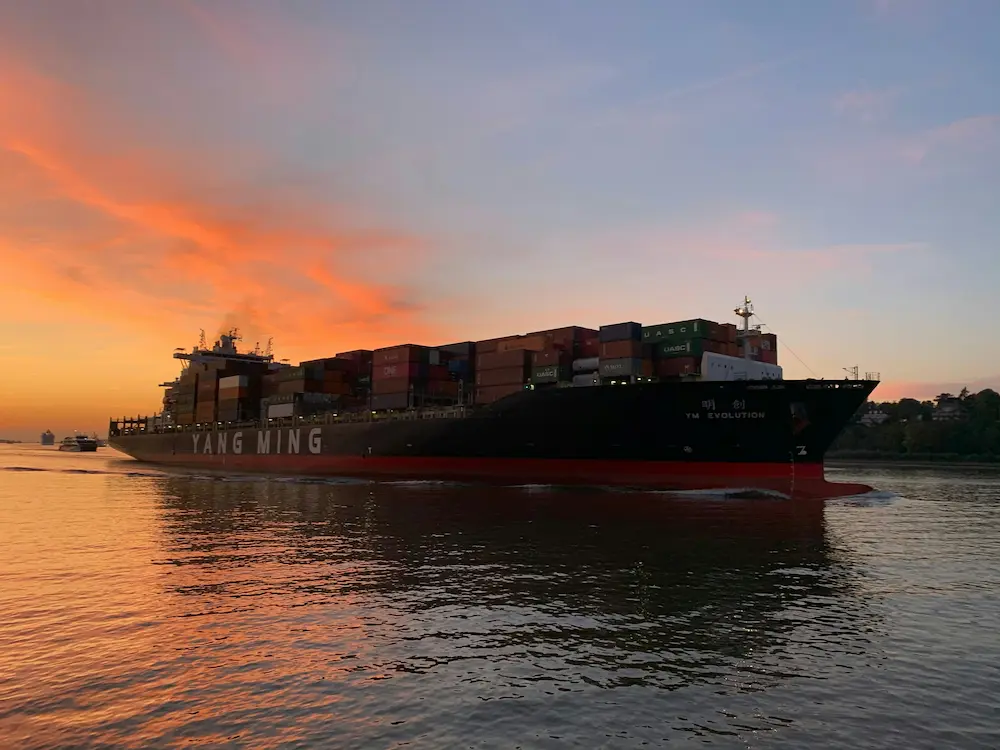
Report: Yang Ming’s YM Mobility Explosion at Ningbo-Zhoushan Port
A massive explosion occurred on the container ship YM Mobility while it was berthed at the Ningbo-Zhoushan Port in China
Log in or Sign up
You are using an out of date browser. It may not display this or other websites correctly. You should upgrade or use an alternative browser .
Fuel Consumption of Larger Yachts
Discussion in ' Boat Design ' started by Slimjim , Sep 14, 2012 .
Slimjim New Member
Hi to all and thanks from a lurker. I'm thinking of getting a larger motoryacht to live aboard,as the values of the 10-15 year old yachts have really dropped with the meltdown and what not. I have ocean front property,so docking is no problem. I have looked and emailed brokers,but can't find any info on consumption at lower speeds-it's not so much the amount as we will use it rarely- just need to know what kind of range I may expect for a 75-85' yacht like a Sunseeker. Any hints will help and thanks again. Jim
WestVanHan Not a Senior Member
Hi slim and welcome to the board. I've had those thoughts lately too..the prices have dropped,and any on the market have been so for years..so the owners need to get realistic. I have a small oceanfront cabin up the coast-but docking in front of it is not a good thing and as you know docking anywhere near Vancouver for something that big is very hard and $$$$$. Otherwise I'd be so tempted. Anyways,I was on a charter Sunseeker 84 Manhattan. Almost all of them came with the 1400hp Cat 3412-which is not a too desirable state of affairs. If they've been used to any of the hp potential they tend to have problem$$. Or when..and I mean "when" not "if" one of them drops a valve,a liner fails,a skirt breaks,or the aftercooler leaks and breaks your pistons-pull it out and throw in a reman Cummins QSB11 as the main driver. Anyways I remember at 10 knots/1000 rpm both engines/ it was 90 litres an hour. I don't see why not at 7-8 knots, you'd be down to 50-60 litres an hour. You'd want to open them up a couple minutes every hour. At 22 knots it's 400+ litres an hour. Look into Fairline,Princess/Viking-the Italian boats seem to be more expensive.
TANSL Senior Member
Search with Google catalogs of engine manufacturer. They indicate consumption, generally, in grams / hp-hour. (about 200 gr/hp-h) They do not say that consumption occurs under ideal navigation conditions, with the engine at 80%, but is data that can be used with caution. See attached example.
Attached Files:
Yamaha FL250AETU.doc
Trying to be helpful tansl, but without knowing how much hp it takes to move the yacht at a speed-charts and specs are useless.
WestVanHan said: ↑ Trying to be helpful tansl, but without knowing how much hp it takes to move the yacht at a speed-charts and specs are useless. Click to expand...
Tad Boat Designer
Princess V72 C32 Cats 1000 RPM = 11.3 knots and 40gph = range of 295 miles Sunseeker 70 1550 HP MANs 1000 RPM =10 knots and 23gph = 500 miles range 1250 RPM = 11 knots and 42.5gph = 300 miles range 1500 RPM = 18.3 knots and 51gph = 399 miles range (best mpg) Those are US gallons
Squidly-Diddly Senior Member
not to thread jack, but how about two engines on one shaft, so..... you aren't lugging a big diesel at lower speed, but still got full power with both engines running. Ideally, I'd have 6 and 12 cyl engines, so I'd have 3 possible power levels....6, 12 or 18 cyls.
mydauphin Senior Member
If you have to ask... You cant afford it. Owning a big yacht is not about fuel, everything else is expensive too. Keep it below 50' and you will save tons of money.
mydauphin said: ↑ If you have to ask... You cant afford it. Owning a big yacht is not about fuel, everything else is expensive too. Keep it below 50' and you will save tons of money. Click to expand...
TANSL said: ↑ Well, you tell me how you will meet the consumption?. Or do you think that yachts consume according to their length? B.R. Click to expand...
OK WestVanHan, sorry if I said something wrong but I do not understand why we can not use information that the engine manufacturer provides. Cautiously or wrongly, is often the best information we can provide. On the other hand, you're right, not only are the main engines that consume fuel, we must take into account all other consumers of fuel in the boat. So I think that neither yours nor my data can answer this question. Finding a yacht consumption, and therefore its autonomy, is quite complicated. But. if the manufacturer gives us a data, why not use it? It's not that I try to help but not answering the question. It is, in my opinion, that if we do not use data as I propose is very difficult to estimate the consumption / autonomy of a ship, with rigor.
TANSL said: ↑ So I think that neither yours nor my data can answer this question. Click to expand...
Jim; forgot to mention there's been a Sunseeker 94 docked here in Vancouver for 12-13 years.I know it had very very rarely been away from the dock up to 2009. I walked and biked past it almost every day. And the last 4 years AFAIK it' hasn't been away much either,I'd guess for haulouts or runs. It was on the market continuously until a couple years ago-but I'd guess they still think it's worth the $4M they were asking for it in 2001. Oh and the tankage on the 84 was 7500 or so..so at 10 knts you should go ~850 miles to empty-more than enough to circumnav. the Island and spend a year parked in the Broken Group if you wanted.
FAST FRED Senior Member
"not to thread jack, but how about two engines on one shaft, so..... you aren't lugging a big diesel at lower speed, but still got full power with both engines running." Ideally, I'd have 6 and 12 cyl engines, so I'd have 3 possible power levels....6, 12 or 18 cyls. " The past 40 years or so the US Navy has been installing two engines tied to a gear box and single shaft on landing craft. My preference would be for a smallish diesel to operate efficiently at 80% power 90% rated RPM for long range cruising, and a stock motor for the times to make a big wake and de-fuel the boat rapidly. 3-71 and 6-71 or 80Hp Deere tractor with Intl DT 466 ,,more Modern , might use less fuel Engine can be disconnected under way , but requires shut down to engage to reengage either engine. No big deal.
- Advertisement:
FAST FRED said: ↑ "not to thread jack, but how about two engines on one shaft, so..... you aren't lugging a big diesel at lower speed, but still got full power with both engines running." Ideally, I'd have 6 and 12 cyl engines, so I'd have 3 possible power levels....6, 12 or 18 cyls. " The past 40 years or so the US Navy has been installing two engines tied to a gear box and single shaft on landing craft. My preference would be for a smallish diesel to operate efficiently at 80% power 90% rated RPM for long range cruising, and a stock motor for the times to make a big wake and de-fuel the boat rapidly. 3-71 and 6-71 or 80Hp Deere tractor with Intl DT 466 ,,more Modern , might use less fuel Engine can be disconnected under way , but requires shut down to engage to reengage either engine. No big deal. Click to expand...
Fuel consumption opinions
1977 Starcraft American 16 fuel tank
Fuel efficiency index
rearranging fuel tanks reduce stern weight
Help Needed with stringer mods to fit Underfloor fuel tank
Reality Check Please- Fuel Tank
Digital fuel metering
Convert No-EPA fuel tank to EPA
Fuel vent posizion and ce/iso rules.
Replacing One Fuel Tank with Two
- No, create an account now.
- Yes, my password is:
- Forgot your password?

CALL US TODAY Fort Lauderdale: 954-467-9010 Punta Gorda: 941-505-2400
Fort lauderdale: 954-467-9010 punta gorda: 941-505-2400.
Our Guide to Yacht Fuel Capacity and Consumption
by Marine Diesel Specialists | Jul 25, 2023 | Blog , MAN Engines , Yacht Engines , Yacht Upkeep | 0 comments
Fuel consumption for yachts can vary based on factors such as the yacht’s size, weight, design, engine type, cruising speed, and the duration of the journey. Smaller pleasure yachts generally tend to be more fuel-efficient than larger luxury yachts, which may consume more fuel at cruising speed. Efficient navigation planning and optimizing cruising speed can play a crucial role in managing fuel consumption effectively. Regular maintenance and adherence to best practices can also contribute to improved fuel efficiency, ensuring that yacht owners can enjoy their voyages with minimized environmental impact and reduced operational costs. If you wish to understand more about yacht fuel capacity and use, then this article from Marine Diesel Specialists , experts in all things professional marine services , is a great place to start your journey toward understanding.
How Much Fuel Does a Yacht Hold?
Fueling a yacht is a critical aspect of ensuring smooth sailing and an enjoyable journey. The amount of fuel a typical yacht can hold in its tank varies greatly depending on the vessel’s size and purpose. Generally, yachts are designed with fuel tank capacities tailored to their intended use, whether it be coastal cruising or transoceanic voyages.
For smaller pleasure yachts, you can expect to find fuel tank capacities ranging from 200 to 1,000 gallons. These yachts are typically designed for shorter trips, day cruising, or weekend getaways, and their fuel capacities reflect those requirements. On the other hand, larger and more luxurious yachts, like superyachts and mega yachts, boast significantly larger fuel tank capacities. Average yacht fuel capacity can vary anywhere from 10,000 to 50,000 gallons of fuel, allowing them to undertake extended journeys across vast distances with ease. It’s essential for yacht owners and operators to understand their yacht’s fuel tank size and plan their trips accordingly to ensure they have enough fuel to reach their destinations safely.
Remember, knowledge about fuel for yachts and yacht fuel tank sizes is vital to maximizing your sailing experience and minimizing the risk of running out of fuel during your adventures on the open waters. For more in-depth information on this topic, we recommend checking out reputable websites of yacht manufacturers that provide comprehensive data on yacht specifications and fuel capacities. There are many factors that can make the capacity of any specific yacht’s fuel canister better or worse for the owner; one such factor is the amount of resources that are used over the course of a trip out on the water.
How Much Fuel Does a Yacht Use?
Average yacht fuel consumption can vary significantly depending on several factors, including the yacht’s size, weight, and duration of your journey out on the water. It’s crucial to consider the yacht fuel capacity of the vessel and its efficiency to better understand its consumption patterns. Fuel capacity is the total amount of fuel a yacht can hold in its tanks, as we mentioned in our previous discussion on yacht fuel tank sizes. Fuel-efficient yachts are designed to minimize fuel consumption while maximizing performance, providing a more eco-friendly and cost-effective sailing experience.
On average, smaller pleasure yachts with fuel capacities ranging from 200 to 1,000 gallons tend to be more fuel-efficient. They often feature modern technologies and hull designs optimized for reduced resistance and better fuel economy. As a rough estimate, these yachts can consume around 20 to 50 gallons of fuel per hour at cruising speed. Larger luxury yachts, such as superyachts and mega yachts with fuel capacities of 10,000 to 50,000 gallons, may have higher fuel consumption rates, averaging around 100 to 500 gallons per hour at cruising speed.
If you are looking to get the most out of your yacht, then you cannot go wrong with marine diesel services and products for marine vessels that are designed to make every trip out on the water smoother and better than the one before. Luckily our expert marine rebuild specialists are able to provide all of the assistance you could ever need.
The Marine Diesel Experts in Fort Lauderdale Are Here to Help
Welcome to Marine Diesel Specialists, your ultimate destination for comprehensive boat engine care and top-quality products. As an authorized distributor, we take immense pride in offering exceptional MAN diesel marine engines renowned for their unrivaled reliability and outstanding performance. Our esteemed Gulf Coast Diesel Service branch operates with marine rebuild specialists in Fort Lauderdale and Punta Gorda, all dedicated to delivering unparalleled customer satisfaction.
Whether you seek expert guidance on engine selection, reliable repairs, or meticulous maintenance, our seasoned professionals are eager to provide you with comprehensive insights and personalized assistance. We’re committed to ensuring your boating experience is smooth and worry-free. To deepen your knowledge of marine engines, we encourage you to explore our vast collection of informative articles on our marine engine care blog which covers topics ranging from yacht fuel capacity and much more. Feel free to contact our marine industry professionals today to discover the full spectrum of our offerings and experience our unwavering commitment to excellence.
Related Readings
- Finding the Best Marine Diesel Engine for You
- Benefits of MAN Marine Engines
Our Marine Diesel Specialists offer a variety of products and services to provide marine diesel solutions in Fort Lauderdale and Punta Gorda. Our authorized MAN Engine dealers can offer expert maintenance, repair, and survey services, as well as complete engine, transmission, and generator overhauls. If you are seeking top-quality marine diesel solutions, products, or services, don’t wait to contact our Marine Diesel Specialists and Gulf Coast Diesel Service.
Submit a Comment Cancel reply
Your email address will not be published. Required fields are marked *
Save my name, email, and website in this browser for the next time I comment.
- Name * First Last
- Questions & Comments
- Comments This field is for validation purposes and should be left unchanged.
- Standard Engine Parts
- Marine Fuel System Solutions
- South Florida Boat Fuel Filters
- Oil Filters
- Starting Air System
- Marine Engine Cooling System
- Heat Exchanger Caps
Other Product Lines
- Citgo, Mobil & Shell Oil
- K&N Filters
- Management Team
- Carpentry & Joinery
- Custom Furniture
- Floor Board
- Gangway / Paserella
- Custom Made Mug Holders
- Deck Caulking Replacement
- Paint Process
- Awl Grip Paint
- Aluminium Paint
- Yacht Paint
- Bottom Preparation
- Antifouling
- Non-Sleep Deck Paint
- Barrier Coat
- Steel Paint
- Grit Blasting
- Sun Odyssey 45
- Jeanneau 42 DS
- Carbon Manufacturing
- Balsa Core Repearing
- GRP Damage Repearing
- GRP Modification
- Bow Thruster Installition
- Carbon Repearing
- Infusion Productions
- Post Curing Application
- Delamination Repairing
- Osmosis Treatment
- Interior Illumination
- Under Water Light Installition
- DC Charge System Upgrade
- Navigation Equipment
- Managment System Application
- Deck Port Panel Design
- DC Consumption Account
- Engine Remote Control
- Renew Standing Rigs
- Stepping / Unstepping Mast
- Rig Repairing
- Mast Head Report
- Mast Foot Report
- Mast Coller Preparation
- Chain Plate Check and Report
- Spartite Application
- Mast Electric Works
- Furling Installation
- Hydraulic System Services
- Easy Tracing System Production
- Splicing Works
- New Sail Supply
- Sail Winterizing Maintenance
- Cruising Shut Systems
- Carbon Composite Works
- Deck Hardware
- Valeting Works
- Conservation Works
- Winterizing Sail
- Main Engine
- Battery Charge
- Life & Raft
- Fire Extinguisher
- Dehumidifiers Service
- Bilge Cleaning
- Winter Cover
- Shrink Wrap
- Out Board Maintenance
- Portable Hangar
- 316L Stainless Steel Bow Protection Plate
- Mechanic Engineering
- Technical Service
- Bonning Electronic Control Services
- Engine Performance Analyze
- Warranty Subjects
- Recommending
- New Engine Installition
- Spare Parts
- Periodic Maintenance
- Caravel Shaft Brearings
- Fluiten mechanic seals
- Offshore Service
- Mobile Service
- Project Managment
- Architect & Engineering
- Development Projects
- New Boat Equipment Review
- Used Boat Review
- Assessing the Damage
- Personnel Qualification Review
- Yacht Transfer
- 2nd hand boat
- Nimbus 370 Coupe
- 13 Mt. Sailing Yacht
- Princess 85
- Sunreef Supreme 68
- Prenses 35 Mt.
- Bougainvillaea 62
- Sunseeker 76
- Princess 64
- Bavaria 2010 Criser 55
- Sunseeker Manhattan 60
- Ferretti Custom Navetta 33
- Catamaran Salina 47
- Beneteau 57
- Hallberg Rassy 37
- Fairline Squadron 680
- Hallberg Rassy 43
- Cardinal 46
- Hallberg Rassy 382
- Lagoon 450F
- Outremer 5X
- Leopard 27 Mt
- Look after and winterising works
- Catamaran Manufacturing
- HR 352 MODEL
- SY SUN ODYSSEY 47
- CARDINAL 46
- S/Y BENETEAU 57
- 65 ft Sailing yacht
- 24 M Wooden Gulet Sailing Yacht
- 12 M Wooden Sailing Yacht
- 17 M Wooden Motor Yacht
- Beneteau 361
- Sun Odyssey 42i
- Sun Odyseey 47
- Halberg Rassy 352
- Sunseeker Predator 74
- Halberg Rassy 37
- Beneteau Oceanis 393
- Halberg Rassy 382
- Ferretti Navetta 33 Customline
- Aluminium 60 feet Custom Sail
- Benetti 115
- X yacht 562
- Sunseeker 84
- Ferretti 225
- Riva rivarama Super
- Oceanis 42CC
- Grand Banks Classic Sedan
- Rivama Super
- Couach Yachts 35
- Wooden Gulet
- Ferretti Custom Line 33
- Custom Wooden Sailing yacht
- Custom GRP Service Boat
- Sunseeker Manhattan 70
- Apremare Maestro 56
- Madera Ribs 16 Mt.
- Hudson Force 50
- 13 Mt. Custom Sailing Yacht
- Beneteau 38
- X Yacht 562
- Eurotrawler 17.5
- Nimbus 370 coupe
- Sunreef 60 Catamaran
- 30 M Custom Sailing Yacht
- Grand Banks 32 Sedan
- 40 M Custom Sailing Yacht
- Ferretti Custom Line Navetta 33
- Princess 23 M
- 13M Sailing yacht
- Fairline 57
- Finngulf 44
- Gelcoat Restore
- Composite Repair
- Hoek Design Refit
- Farr 50 Refit
- Yacht Refitting
- Vacuum Infusion
- Composite Repairing On The Bow Keel
- Electrical Control Panels
- Additional DC Alternator
- Engine Rectification
- Custom Product
- Teak Renewing
- Mast & Boom Paint
- Hull Application
- Non-Slip Surface
- Mast Replacement
- Mast Reparing
- Propulsion Repair
- Custom Productions
- Adjustable Davits
- Dinghy Gallery
- (Türkçe) Nasıl bir tekne alayım?
- Names of the Wind – Compass Directions in 7 Languages
- Turkish names of Aegean Islands
- Mustafa Pasa
- The “Grand Wind” in the Gökova Körfezi
- “Yayla Tepmesi” or the Katabatic Winds of Mt. Kiran
- Piri Reis in “Bahriye (Seamanship)” “The Ceramic Gulf Explained”
- Ottoman Sailing Ships (A remarkable book)
- Turkish Water
- Uluburun II
- Skylax: A “Rooster” from Gölköy
- (Türkçe) Sıcak daldırma galvaniz nedir?
- (Türkçe) Taksan TTU 500 Torna İlerleme Mekanizması
- (Türkçe) Cıvatalar için önerilen çevirme momentleri
- Rudder Repair
- Radar Mast Polyester Repairs
- (Türkçe) Dümen Skegi Üzerinde Kapsamlı Onarım
- (Türkçe) Zehirli boya tatbiki ile ilgili bilgiler
- (Türkçe) Kum Raspası
- No.01 Keel Repairing Gallery
- No.02 Repair of Balsa and Core Osmosis Gallery
- No. 03 Bow thruster Installation Gallery
- No.04 Teak Deck Renewing and Mast/Boom Repainting Gallery
- Steel Keel Preparation
- Seacock Installition
- FAQ Procedures
- How To Obtain a Residence Permit
- Ports of Entry of Turkey
- “INSTRUCTIONS TO FOREIGN FLAG PRIVATE YACHTS” as printed on the cover page of the Turkish Transit log.
- Some details to be considered when sending goods to yachtWORKS from abroad
- Annotations to the Customs General Declaration
- Exclusion Clause
- Turkish Coast, Zones with SCUBA Prohibition
- Turkish Transit log
- 2023 Relunch
- Relaunched 2022
- Relaunched 2021
- Relaunched 2020
- Relaunched 2019
- Relaunched 2018
- Relaunched 2017
- Relaunched 2016
- Relaunched 2015
- Relaunched 2014
- Electrical Works
- Propeller polish
- Turgutreis / Bodrum
Fuel consumption and range values for motoryachts
With sample measurements on a grand banks 36 my trawler data source: powerboat & motoryacht magazine.
We all know, we all hear, that consumption, range, noise and engine wear are strongly related to the engine revolutions. The data below show that these relations are beyond the imagination of most of us.
All what has been done is that a boat was run with varying engine revolutions and consumption, speed and noise were recorded.
1. Speed of the vessel is the variable least depending on engine revs. When the engine revs are 1000-1 speed is 6.3 knots. When the engine is revved up to 2650-1 , the speed has increased to 15.7 knots. 2. Range, way made good per unit fuel and hourly consumption are highly dependent on the engine revs. As an example, while at 1000-1 revs the hourly fuel consumption is 7.6 liters. At 2650-1 revs this has increased to 84.9 liters. Thus, the hourly consumption has increased more than TEN fold. At the same time, range and way made good per unit fuel has decreased FIVE fold. At this example the “good” revs are 1500 – 1750 revs. Specially the green curves show the “hump” at these revs. Above these revs the range drops more significantly.
In summary, whoever runs his/her engines calmly, reduces engine wear, saves money and has the comfort of a larger range. Whoever “beats” the engines harm the environment and themselves..
|
|
| [1]Original tables from PMY magazine
|
| Boat | Grand Banks 36 MY | Test Conditions | |
| Length OA | 11.23 m | Temperature | 21 ºC |
| Beam | 3.86 m | Humidity | %85 |
| Fuel Capacity | 1515 l | Wind | No wind |
| Draft | 1.22 m | Sea Condition | Very Calm |
| Displacement | 12.2 ton | Fuel | ½ capacity |
| Engines | Dual 210-hp Cummins 6B15.9M | Water | Full |
| Transmission | Twin Disc MG 5050 2.54:1 | Crew | 3 |
| Propellers | 28”x25” 3-blade bronze | Load | Light |
The speed has been measured as average of two direction by radar.
Source: Powerboat & Motoryacht, January 1996, page 92

How Much Gas Do Boats Use? 5 Boat Types Explained
Many small, personal watercraft boats tend to use 3-8 gallons of gas per hour at cruising speeds, while faster boats like speed and motorboats can use 20-30 gallons an hour. Depending on the weight, size, and style of your boat, you will use within this very large range.
Instead of painstakingly trying to figure out your gas mileage, consider these five boats and their averages that we’ve listed below!
Table of Contents

What Impacts the Amount of Gas a Boat Will Use?
The amount of gas that a boat uses depends on a variety of factors.
The biggest factor that affects gas mileage is the motor a boat has. Knowing your motor or engine’s power is a must when it comes to your boat.
Other factors include:
- Length of the boat
- Amount of weight on board
- How fast you drive
- Weather and water conditions
In addition, the condition of a boat also impacts how much fuel it will burn. A poorly maintained engine will burn more fuel than one that is properly maintained. A boat in overall bad maintenance, in areas such as the hull or transom, will also contribute to poor gas mileage.
The way that you drive the boat also plays a large role in how much gas is burned by the engine. Every boat and engine will have its own unique ‘sweet spot’ where it burns fuel the most efficiently. For average-sized recreational boats, this speed is often slower than 20 knots.
How smoothly you steer and control your boat also plays a factor in fuel consumption. Other factors beyond your control include the weather conditions, how rough the water is, and adverse currents.
These will no doubt decrease gas mileage as you try to motor yourself against the wind and out of a storm.
Related Article: 13 Clever Ways to Get a Good Deal on (New) Boats
How Do you Save Gas and Money?
One of the most essential factors determining how much gas your boat will use is the motor. A motor should be properly maintained at least once per season by an expert. This will help save you money in the long run in fuel costs and mechanical issues.
The overall maintenance of a boat plays a large role in fuel efficiency. In order to save the most gas while boating, you should take good care of your boat and keep it clean, well maintained, and free of excess gear or heavy items.
The hull of the boat should be kept clean and free of any debris that could cause resistance. When a hull is dragging, your boat’s engine will burn more fuel. A clean, lightweight boat burns the least amount of fuel and is the most efficient.
Another way to save on gas costs while boating is to shop for your gas before you head to the marina. The gas at marina-side service is often overpriced due to convenience. Filling up your own gas can or container at a local service station before heading to the marina can help you save money on fuel costs.
Related Article: 9 Tips to Sell Your Boat Quickly (Without Dropping the Price)
Average Gas Used by 5 Different Boat Types:
While every boat will use a different amount of gas on average, boats of the same type will generally have similar fuel consumption rates. When you have very different boats, though, it is hard to tell what the “average” is.
We’ve listed a few common boats and their gas mileage expectations here:
Pontoon Boats
Pontoon boats are slower and feature a multi-hull design that makes them less fuel-efficient than boats that plane on the surface of the water. Because they have to push their pontoons through the water, the engines used on these boats must be powerful. Therefore, these boats are not very fuel-efficient and care should be taken to properly maintain them to retain optimal efficiency.
The average pontoon boat will consume around 5 gallons per hour at cruising speed. This means that a five hour trip out on the water will take 25 gallons of gas.
Related Article: Boat Fuel Types: What Fuel Type for My Boat? (Newbie Guide)
Bass boats are known for their sleek design and are mostly geared toward fishing. Modern bass boats include a smooth fiberglass hull design and powerful fuel-injected outboard engines. While these factors may help with controlling and steering a boat, the gas consumption of many bass boats still leaves much to be desired.
A good bass boat tends to spend most of its time trolling or idle while fishing, but getting from place to place can still eat up your gas. However, fuel consumption on a bass boat is better than a pontoon.
An average bass boat will consume between 4 – 5 gallons per hour at cruising speed. Bass boats reach optimal fuel efficiency when running the engine between 3,000 and 4,000 RPM.
Center Console Boats
Center console boats offer very little in the way of frills or seating. However, this does not make for improved gas consumption rates.
The length of a center console boat, as well as the engine choice, play a significant factor in determining the fuel consumption rate of a center console boat. With a hull length over 20 feet, some center console boats can average as much as 5 – 6 gallons per hour! But this will be at a speed of over 20 knots.
A well-maintained center console boat can average as low as 3 gallons per hour, with many averaging 4 gallons per hour in good conditions.
This is because their sleek design was made for getting from place to place quickly. You will be very happy with their gas consumption.
Related Article: How Long Do Sailboats Last?
Cabin Cruiser Boats
Cabin cruisers offer all the comforts of home out on the water, with many having room for a galley and modern comforts such as air conditioning. This makes the gas consumption of most cabin cruisers somewhat high, as the added weight to the boat requires a larger motor.
The cruising speed of a cabin cruiser has a large role in the amount of gas consumed. Not to mention the design and age of the boat. A lighter boat with a modern outboard motor will be more efficient than an older boat with an inboard engine.
A typical cabin cruiser can expect to get anywhere from 1 – 2 miles per gallon. This makes cabin-cruisers one of the least gas efficient boats used by most recreational boaters.
However, proper maintenance and careful cruising can help improve the boat’s gas efficiency.
Bowrider Boats
These boats are known for their ability to fit the entire family on board to have a good time. Bowrider boats feature plenty of space for seating and maneuvering around the boat. Therefore, the amount of passengers and partygoer equipment onboard plays a large factor in how much gas your bowrider boat will burn.
Bowrider boats can get expect to get an average of 3 miles per gallon of fuel.
However, this will vary wildly based on how much your boat weighs and how fast you cruise. The more people and the faster you go? The more fuel you burn.
A well-maintained bowrider with few passengers on a nice day may reach as much as 5 miles per gallon at the most efficient cruising speed.
Final Thoughts
The amount of fuel burned by a boat will vary depending on the age, condition, and maintenance level of the boat overall and its engine. A boat in overall poor condition will have poor fuel mileage.
An older boat, with an older engine, will also have poor fuel mileage when compared to more modern boats.
When looking to find the fuel mileage of your own boat, its possible to buy a fuel consumption gauge, but they can be expensive. It is much easier to just keep good records, and divide the amount of fuel burned by the distance traveled. You may want to make several trips with your boat to find the average of your fuel consumption. Take notes about your speed and other conditions, because these will affect your fuel efficiency.
Once you know how much fuel your boat is currently using, you can begin to adjust your cruising speed, trim, or other conditions, to improve your fuel efficiency.
Click to share...
Visit our Popular Forums
- Monohull Sailboats
- Multihull Sailboats
- Powered Boats
- General Sailing
- Antares Yachts
- Fountaine Pajot
- Lagoon Catamarans
Cruising Business
- Boat Classifieds
- General Classifieds
- Crew Positions
- Commercial Posts
- Vendor Spotlight
Life Aboard a Boat
- Provisioning: Food & Drink
- Families, Kids, & Pets Afloat
- Recreation, Entertainment, & Fun
- Boat Ownership & Making a Living
- Liveaboard's Forum
Seamanship, Navigation & Boat Handling
- Seamanship & Boat Handling
- Training, Licensing, & Certification
- Health, Safety, & Related Gear
- Rules of the Road, Regulations, & Red Tape
Engineering & Systems
- Const. / Maint. / Refit
- Product / Service Reviews
- Electronics: Comms / AV
- Electrical: Batts / Gen / Solar
- Lithium Power Systems
- Engines & Propulsion
- Propellers & Drive Systems
- Plumbing / Fixtures
- Deck Hdw: Rigging / Sails
- Aux. Equipment & Dinghy
- Anchoring & Mooring
Photo Categories
- Member Galleries
- Life Onboard
- Sailing in the Wind
- Power Boats
- Cruising Destinations
- Maint. & Boat Building
- Marine Life
- Scuba Diving & Divers
- General Photos
Recent Photos

Listing Categories
- African Cats
- view more »
- Crew Wanted
- Crew Available
- Enhance Your Account
- Meet the Mods
- Meet the Advisors
- Signup for The Daily Cruiser Email

IMAGES
COMMENTS
3 hrs x 130 gph = 390 gallons. All that is left to do now is add up the total amount of fuel needed and multiply the number with the price per gallon. (7500+390) x $3,5 = $27615. In this example, the final cost of your will set you back a little bit more than 27 thousand dollars.
While it's challenging to provide a one-size-fits-all answer due to the variables involved, we can offer some general guidelines. On average, a yacht might use between 20 to 100 gallons of fuel per hour. Smaller yachts, such as those around 40 feet, tend to be on the lower end of the scale, consuming about 20 to 40 gallons per hour.
Fuel prices can vary but typically costs between €0.80 and €1.30 per litre. Yacht charter, sales and management company West Nautical added: "Fuel costs should be at the top of any yacht owner and captain's minds for two reasons: to minimise costs as well as reduce the environmental impact of burning unnecessary fuel.
Yachts Zenith Nautic S.L. VAT Number: B56880875. Address: Avenida Sant Jordi, 48. Ibiza, Spain. Discover accurate boat fuel consumption with our Boat Fuel Calculator and comprehensive list, helping you plan your yacht charter fuel costs effectively.
Example 3: Some yachts can cruise at 10 knots and consume 100 l/hour. Example 4: A sailing catamaran can cruise at 8 knots and consume around 35 l/hour. Fuel prices can fluctuate, but typically fuel is between €0.8 - €2.2 per litre. Get in touch with one of our client managers for a more accurate fuel distance calculation.
In typical and relatively calm conditions, a 300-horsepower diesel engine would burn 16.6 gallons of diesel fuel per hour with variance based on the previously stated factors. You would then combine this fuel consumption per hour with the number of nautical miles to be traveled and the expected travel time to calculate your yacht fuel cost.
2.082,50 lt x 1,50 Euro = 3.123,75 Euro. Let's resume the "magic formula" for yacht fuel calculation. If your sailing itinerary contemplates 150 nautical miles at a constant cruising speed of 18 knots, 250 lt/hr consumption, and marine diesel cost of 1,50 Euro/lt, at the end of our yacht charter, we will have a bill of 3.123,75 Euro.
Yes, our yacht operating cost calculator can output a budget suitable for this situation. Adjust the owner use to 2 (minimum value), owner slider to 0, crew slider to 10%, Administration to 10%, Fuel and Dockage to 0, Maintenance to 10% and then Capital Repairs to 0. This will remove all of the large charges associated with owner use and vessel ...
The majority of the time, older yachts consume much less fuel than newer ones, but they also don't travel as quickly. Yacht fuel capacities can vary from 1,000 liters to one million liters. Owners usually choose to have big tanks for fuel so they can travel longer distances, rather than having a smaller tank with extra guest space on board.
The efficiency of boat fuel is measured in pounds of fuel that are used in an hour per horsepower. In order to be able to read the calculation right, any boat owner should know that gasoline is almost 6.1 pounds per gallon while diesel is 7.2 pounds per gallon. Usually, if you consider that all sea conditions are pristine, the fuel consumption ...
A boat fuel consumption is a rate at which the engine on a boat consumes fuel, typically measured in gallons per hour. ... To determine how much fuel would be used at half throttle/half horsepower, divide the result by 2. 32.786 / 2 = 16.393 gallons per hour . Not finding what you need?
GPH = (0.4 x 300)/ 7.2 = 120/7.2 = 16.6 GPH. 300-hp Gasoline Engine Example. GPH = (0.50 x 300)/ 6.1 = 150/6.1 = 24.5 GPH. Keep in mind that these formulas apply when the engine is making peak horsepower, which usually is near wide-open throttle. Fuel consumption will be decreased at cruising speeds.
Motor yachts can use a variety of fuel types, including diesel, gasoline, biodiesel, and electric. Diesel engines are commonly used in larger motor yachts that require a lot of power, while gasoline engines are often used in smaller sporty yachts that are designed for speed and agility. Biodiesel is often used by eco-conscious yacht owners who ...
Fuel prices can vary but typically costs between €0.80 and €1.30 per litre. Yacht charter, sales and management company West Nautical added; "Fuel costs should be at the top of any yacht owner and captain's minds for two reasons: to minimise costs as well as reduce the environmental impact of burning unnecessary fuel.
The price range of yachts measuring from 36 to 40 feet is from $125,000 to $225,000. Slightly bigger yachts ranging from 41 to 45 feet can cost from $325,000 to 475,000. Here are some of the yachts within this range that are selling online: The Atlantis - 40 feet overall length and priced at $297,500.
But be warned, these numbers only scratch the surface-factors like boat drag, sea conditions, and efficiency losses can greatly affect your fuel burn. To navigate through this maze, use this formula to estimate your boat or engine's fuel consumption: GPH = (specific fuel consumption x HP) / Fuel Specific Weight. Weight: Gas = 6.1 lb. per gal
Once you know the fuel burn rate, you can estimate how much fuel the boat will consume in a given period. For example, if the boat travels at a speed of 20 knots and has a fuel burn rate of 0.1 gallons per horsepower per hour, and the engine has 200 horsepower, the boat will consume 20 gallons of fuel per hour.
Anyways I remember at 10 knots/1000 rpm both engines/ it was 90 litres an hour. I don't see why not at 7-8 knots, you'd be down to 50-60 litres an hour. You'd want to open them up a couple minutes every hour. At 22 knots it's 400+ litres an hour.
Let's step up to 60 foot. 60 Foot Yacht Cost. Now we're looking at 2-bedroom yacht prices. A yacht in this range approaches the upper end of the owner/operator criteria. ... It is 70′ 6″ with 2,140-gallon fuel capacity. The inside is lavish, with a galley, a huge salon, and five staterooms. Yacht Price Examples for Two Other 70 Foot.
On average, smaller pleasure yachts with fuel capacities ranging from 200 to 1,000 gallons tend to be more fuel-efficient. They often feature modern technologies and hull designs optimized for reduced resistance and better fuel economy. As a rough estimate, these yachts can consume around 20 to 50 gallons of fuel per hour at cruising speed.
Range, way made good per unit fuel and hourly consumption are highly dependent on the engine revs. As an example, while at 1000-1 revs the hourly fuel consumption is 7.6 liters. At 2650-1 revs this has increased to 84.9 liters.
By Morten Storgaard / Boating, Power Boats / Reviewed by: Albert Presgraves, Boater, Engineer. Many small, personal watercraft boats tend to use 3-8 gallons of gas per hour at cruising speeds, while faster boats like speed and motorboats can use 20-30 gallons an hour. Depending on the weight, size, and style of your boat, you will use within ...
I had browsed the "'gas or diesel thread but did not find much on actual fuel consumption based on experience. I missed the information that "bastonjock" posted on Dec 23, 2008: "My buddies prout sirrocco uses about 1 liter per hour at 5knots using a 15 year old diesel,the equivalent gas engine on a sirrocco a 9.9 yam burns 2 liters of gas per hour to do the same speed,so its either 0.60 an ...